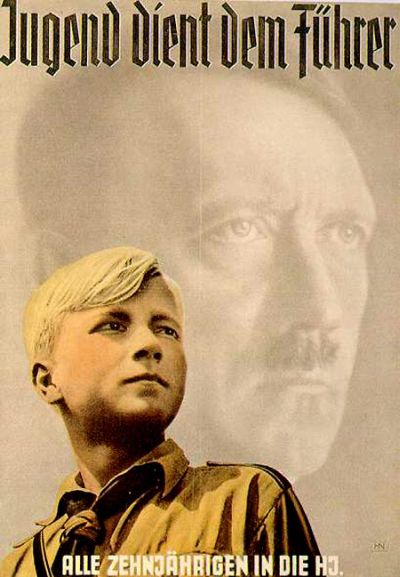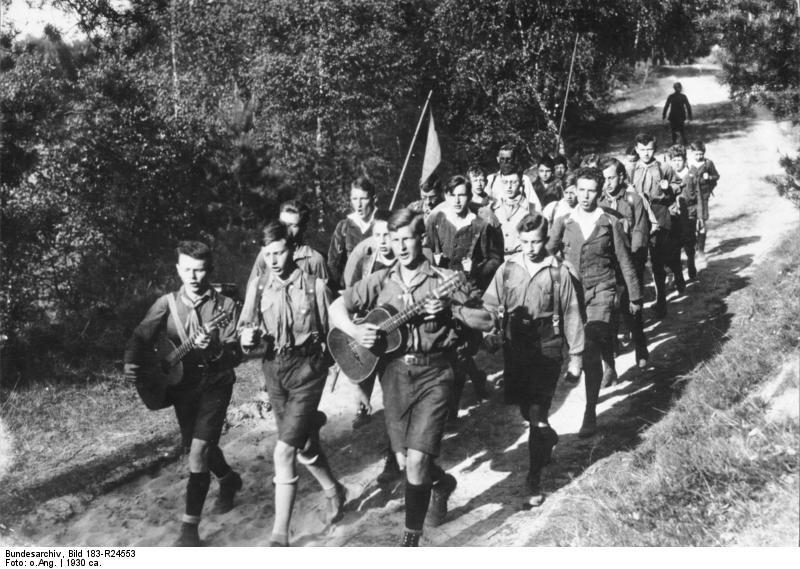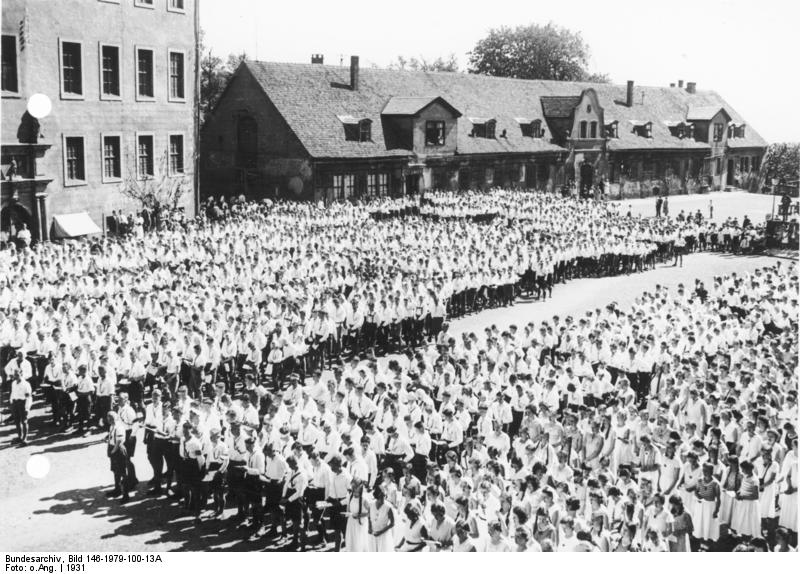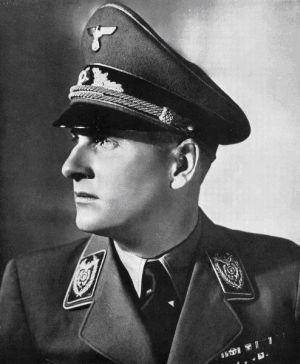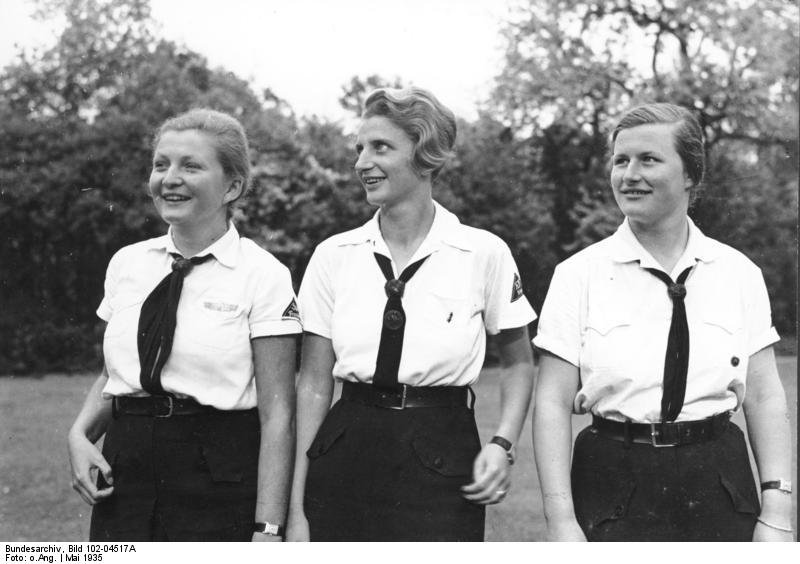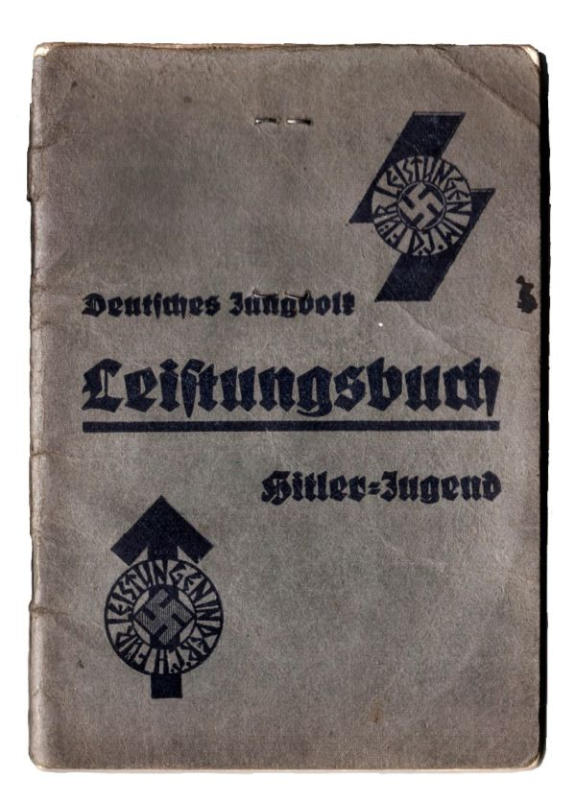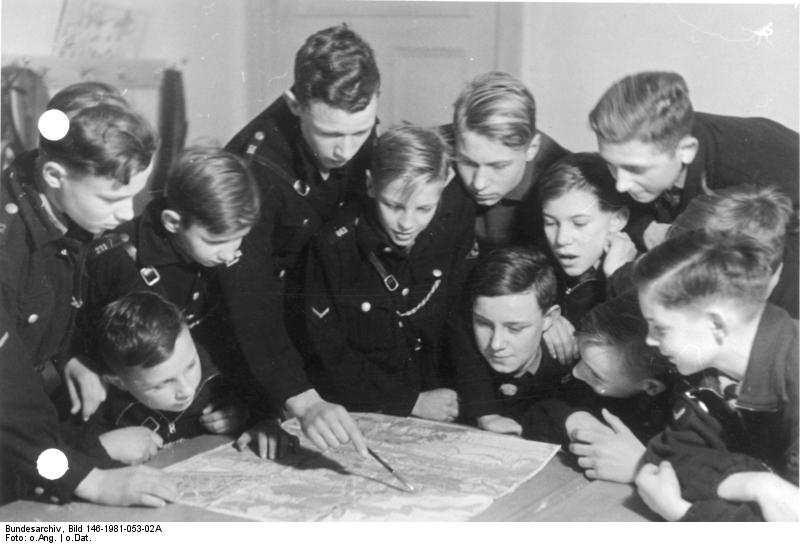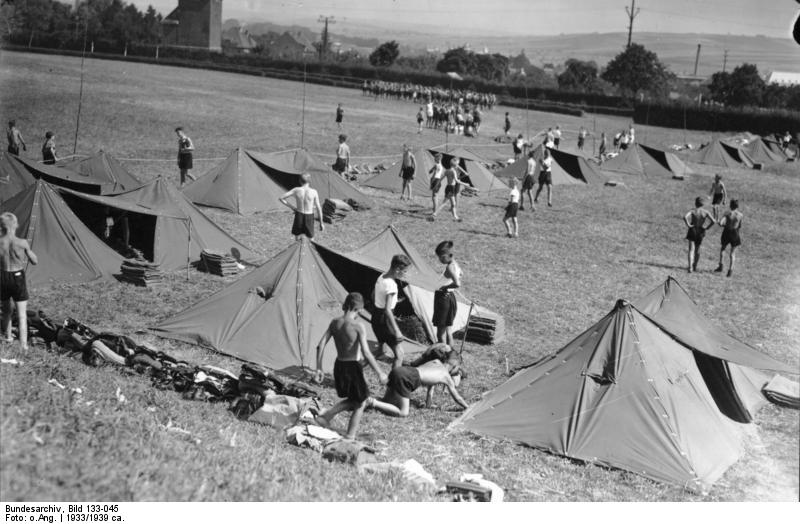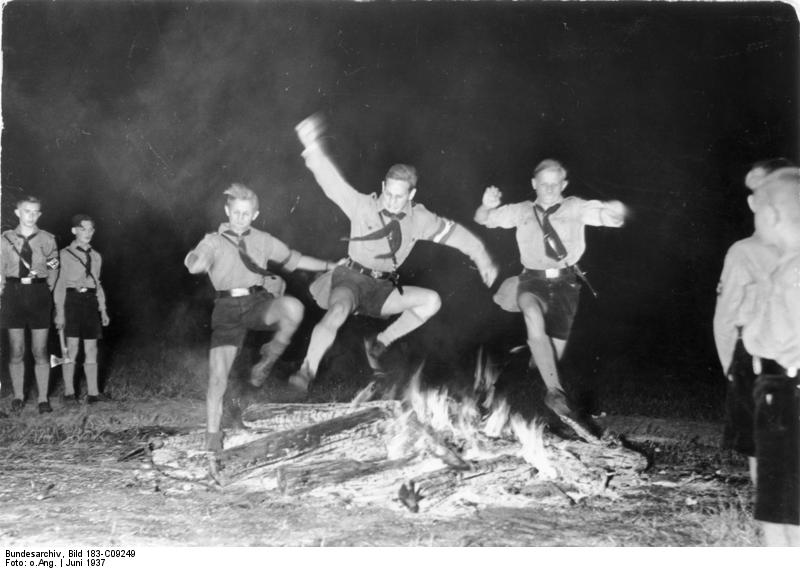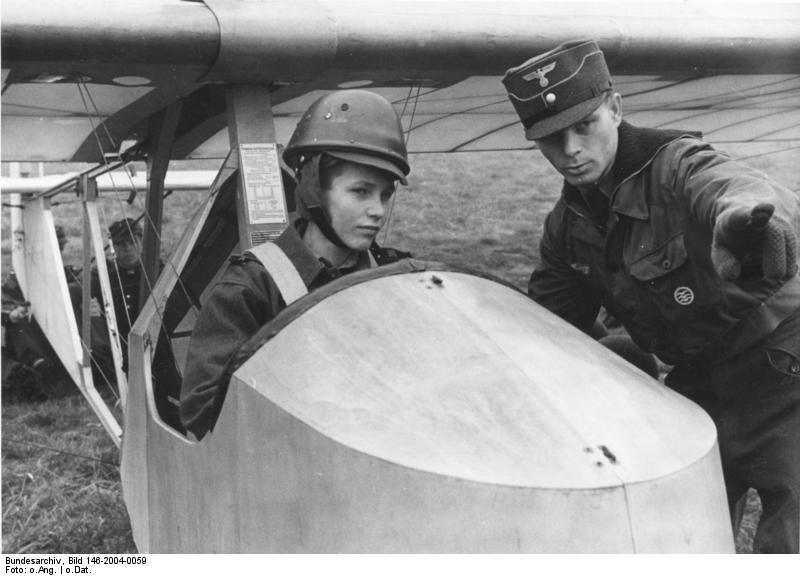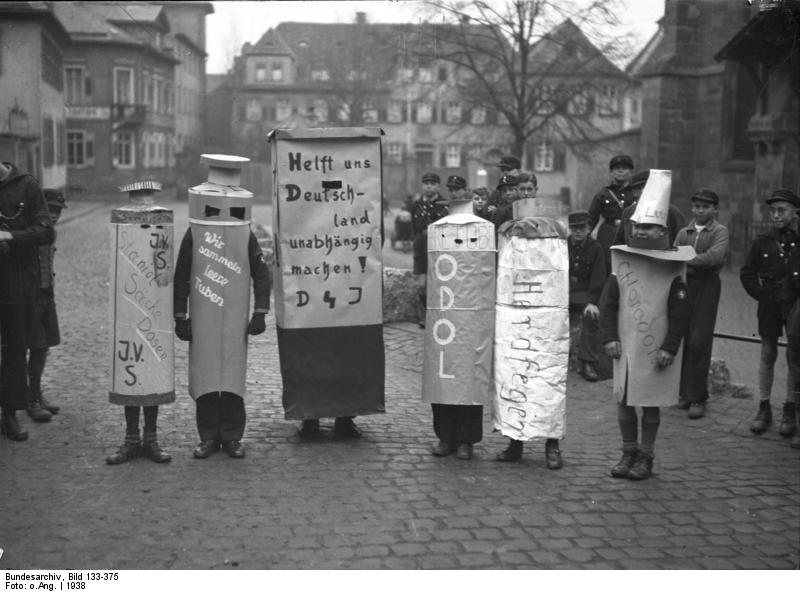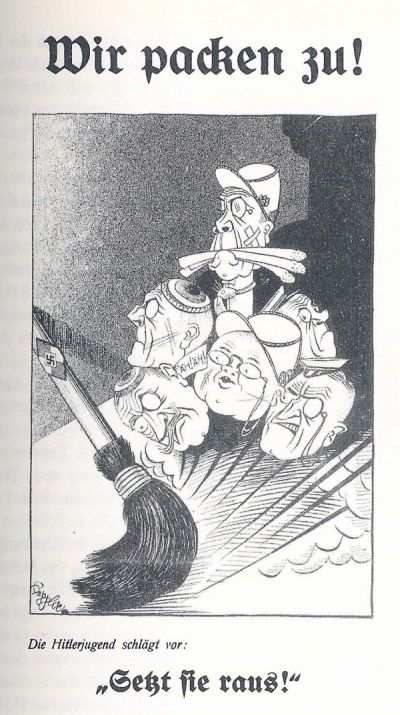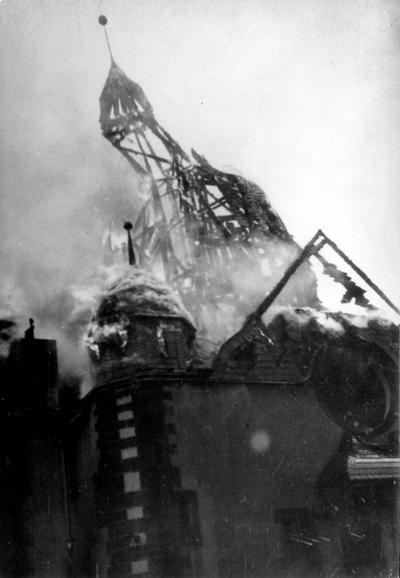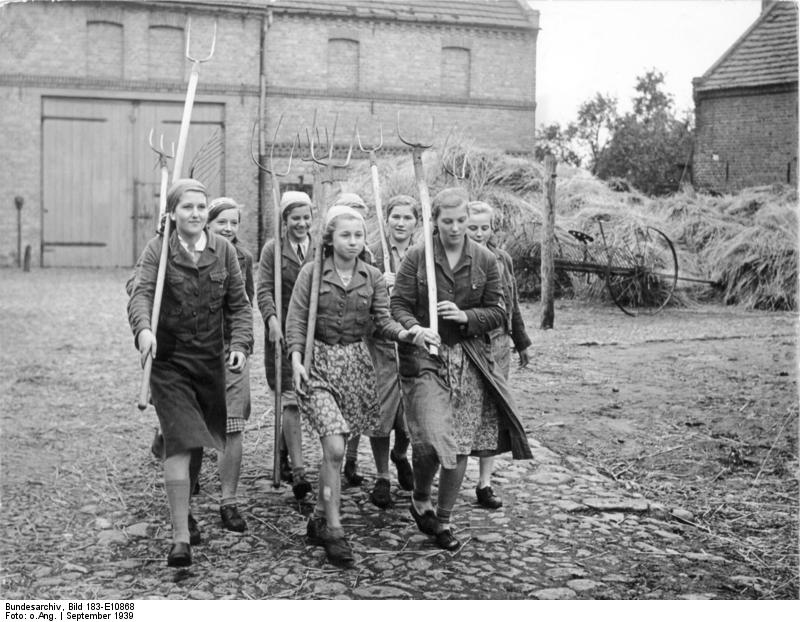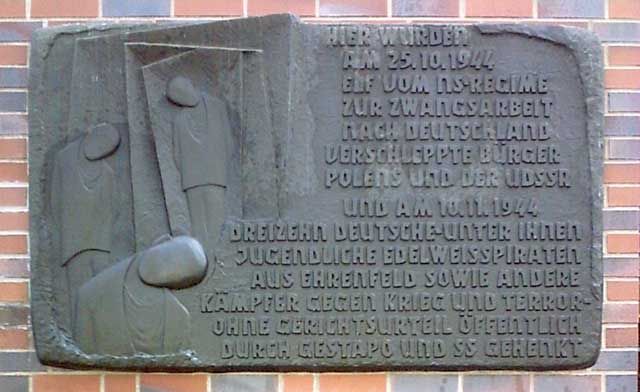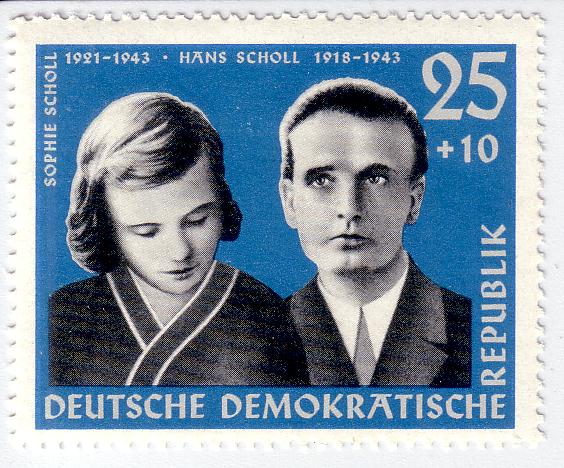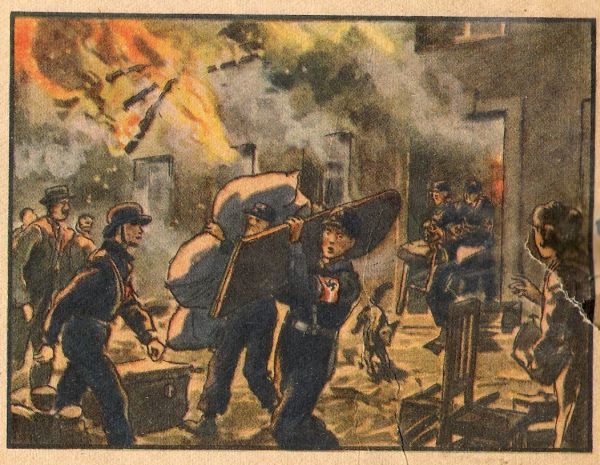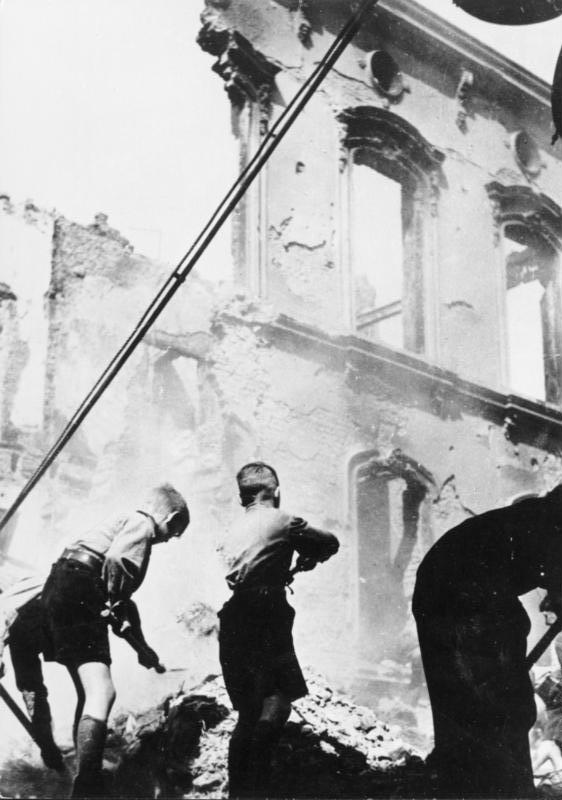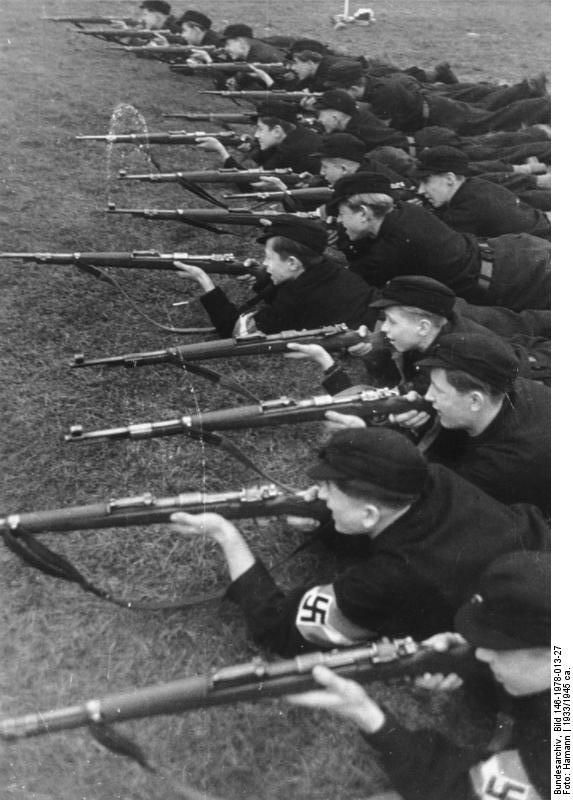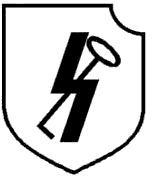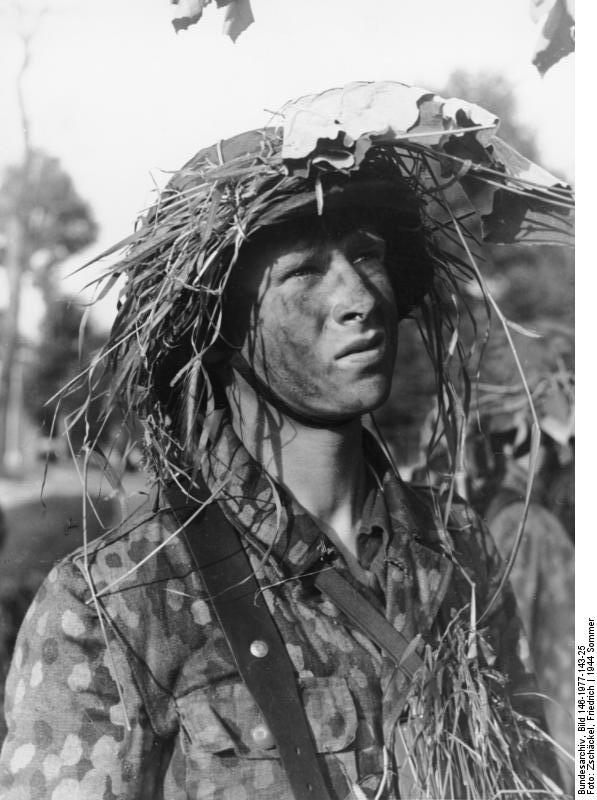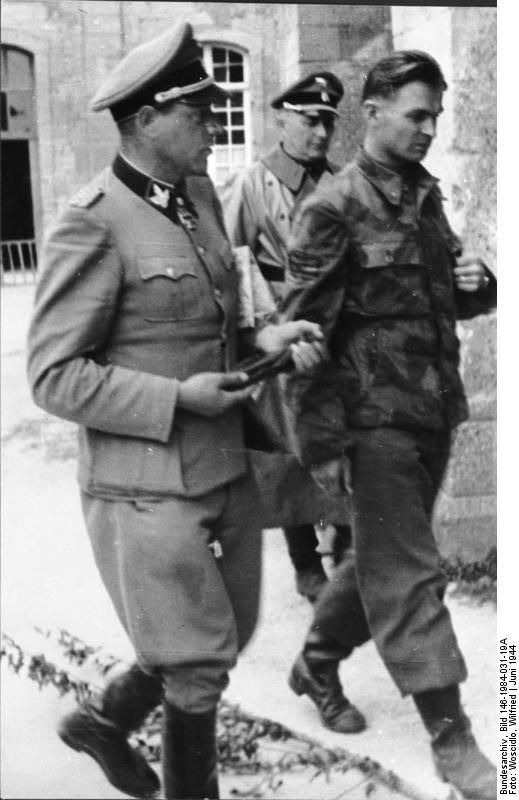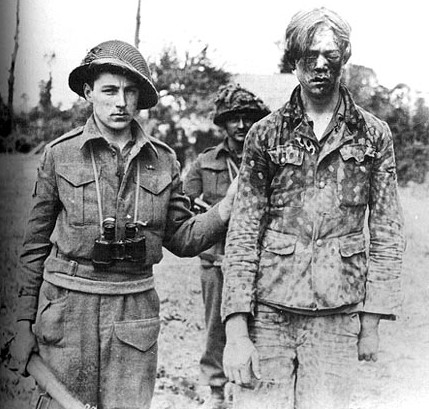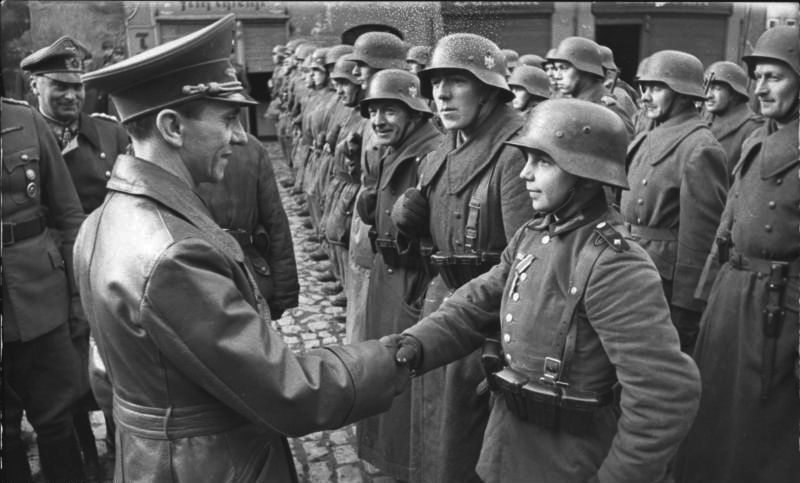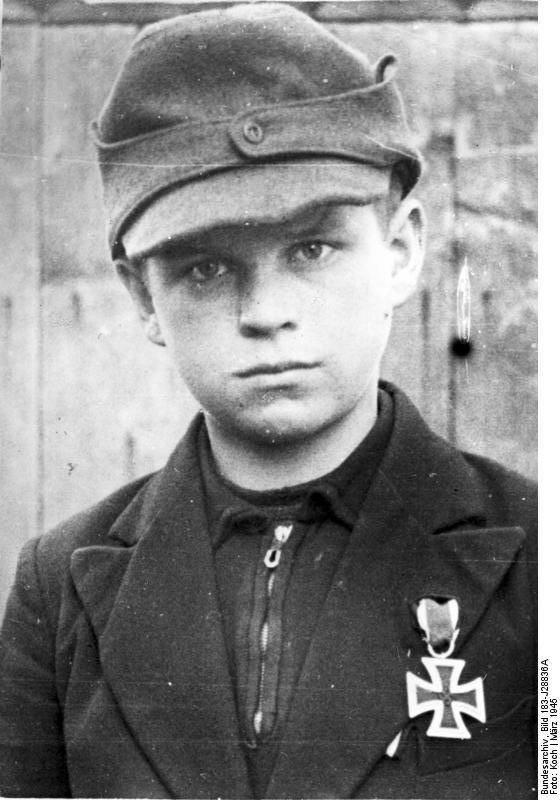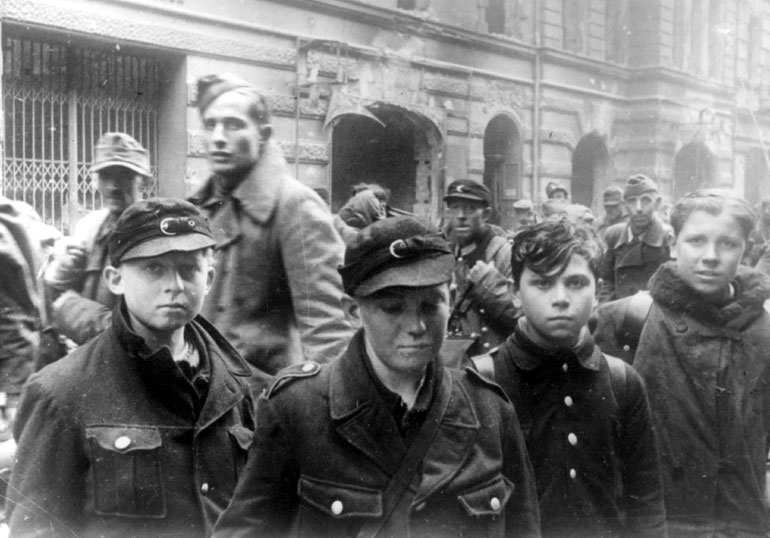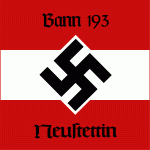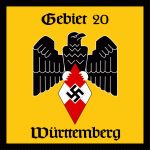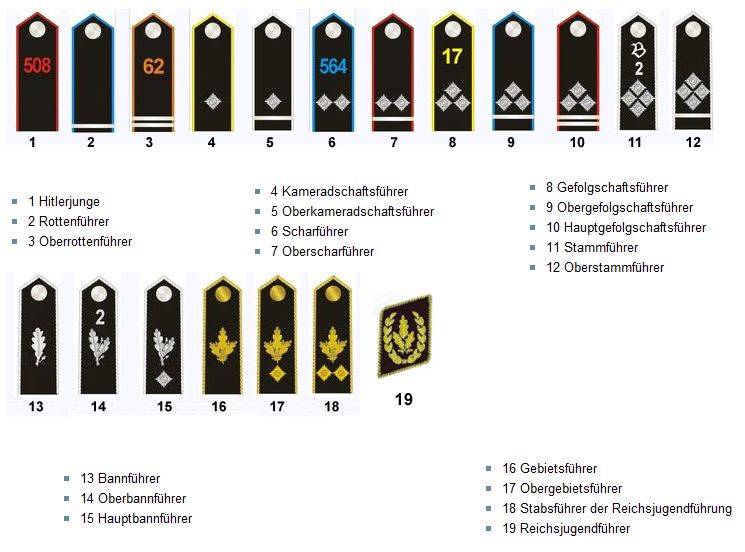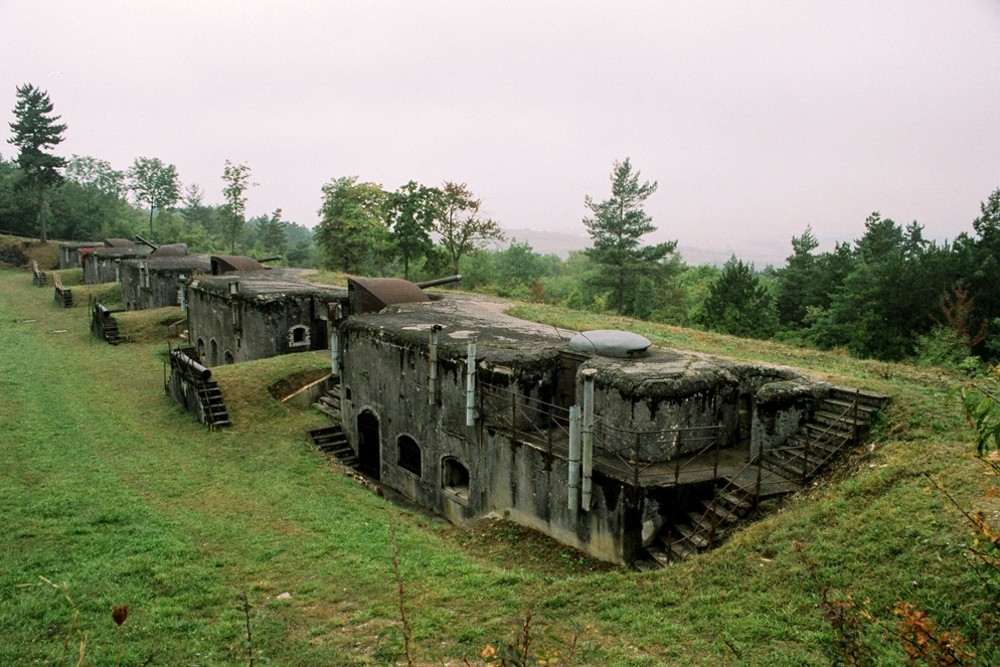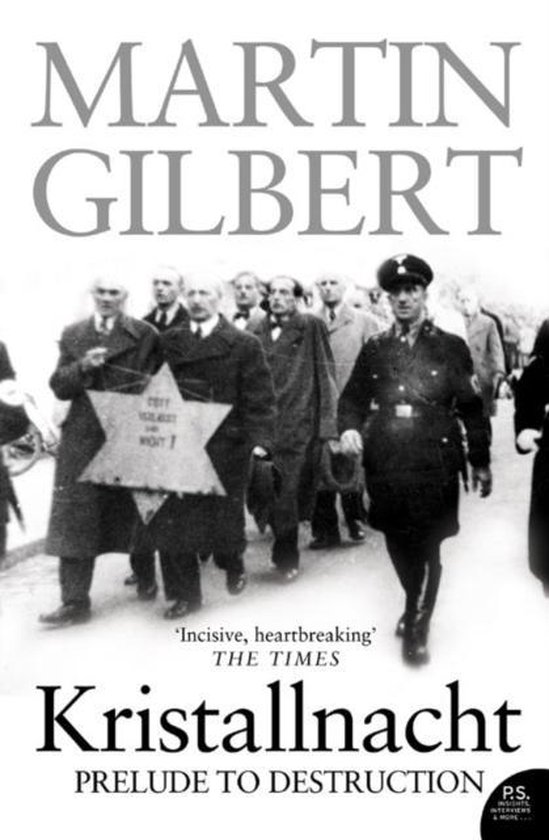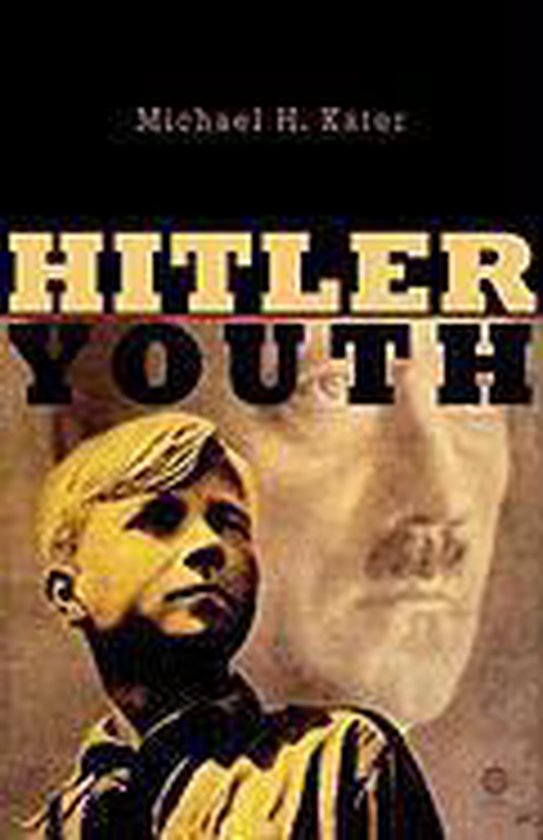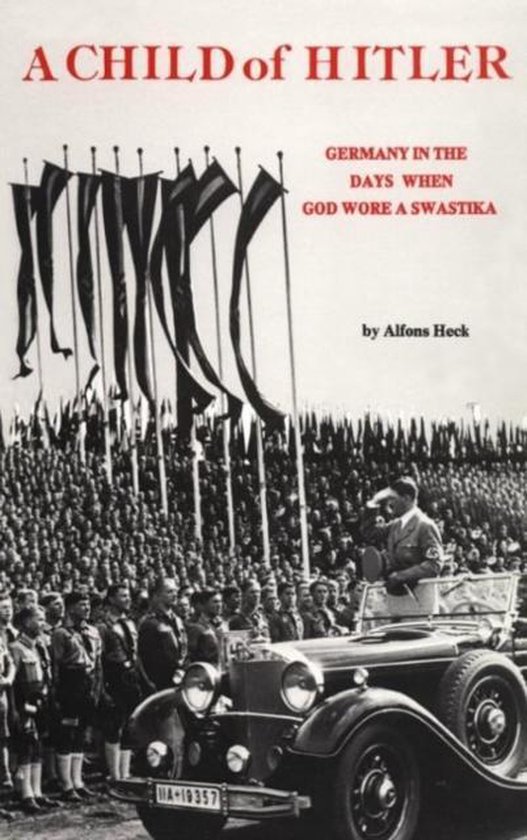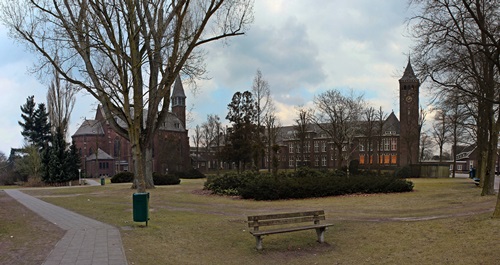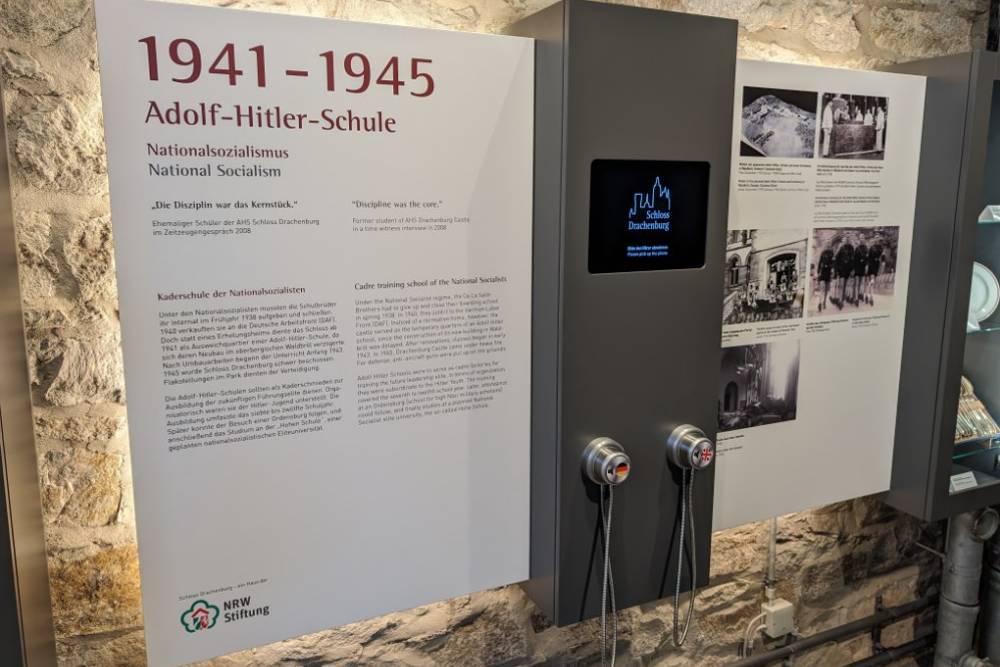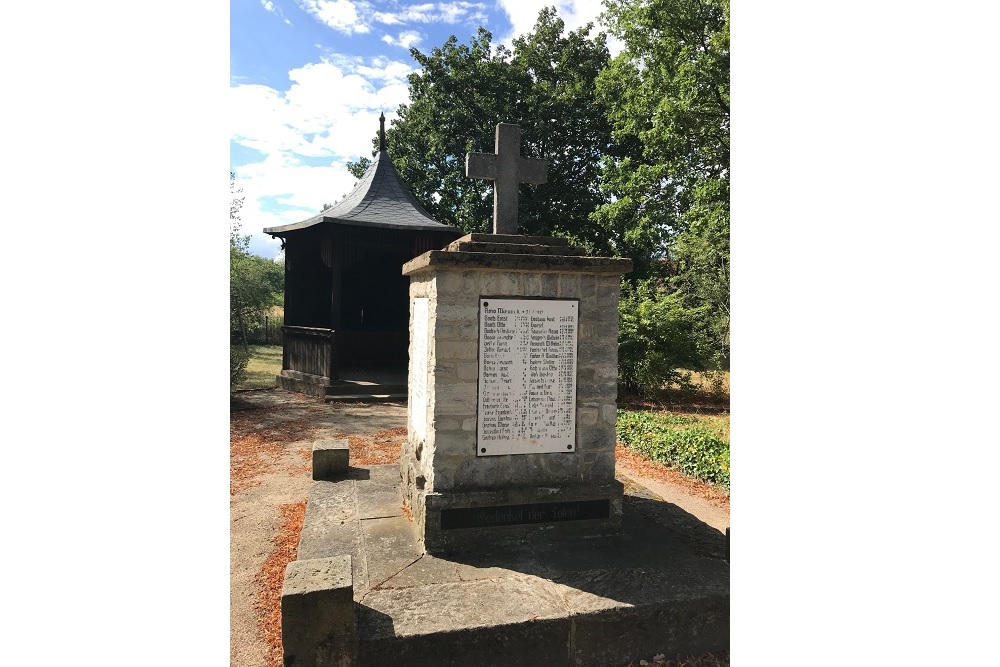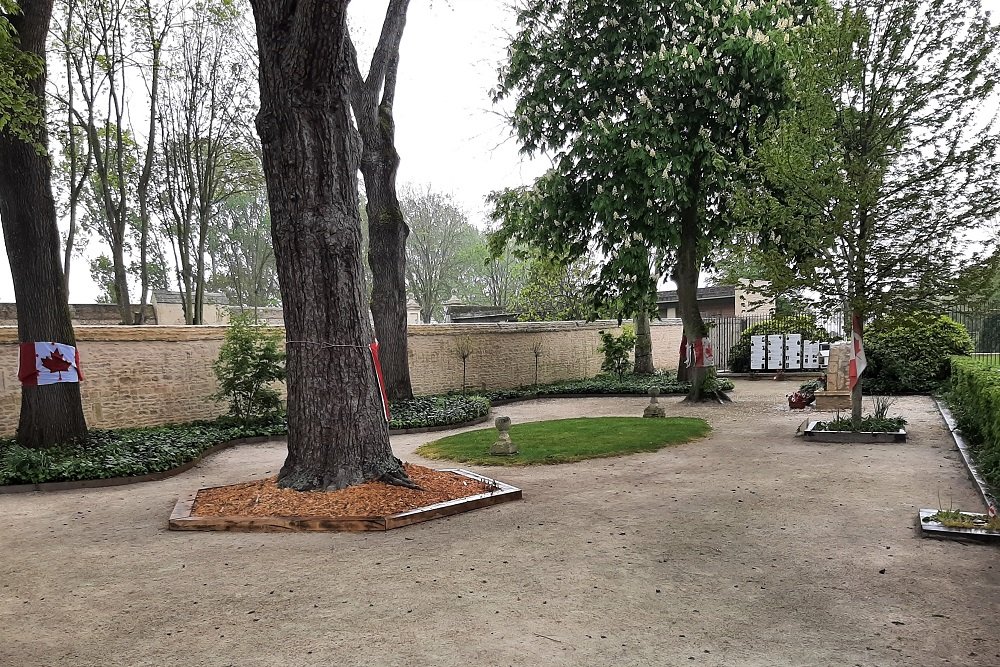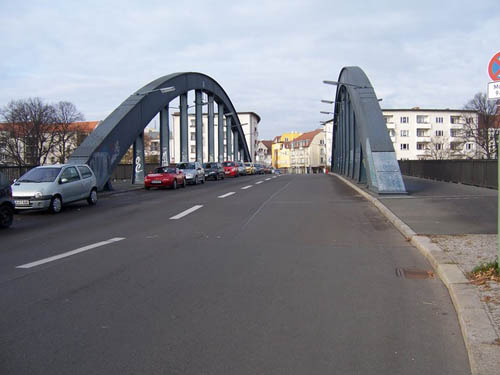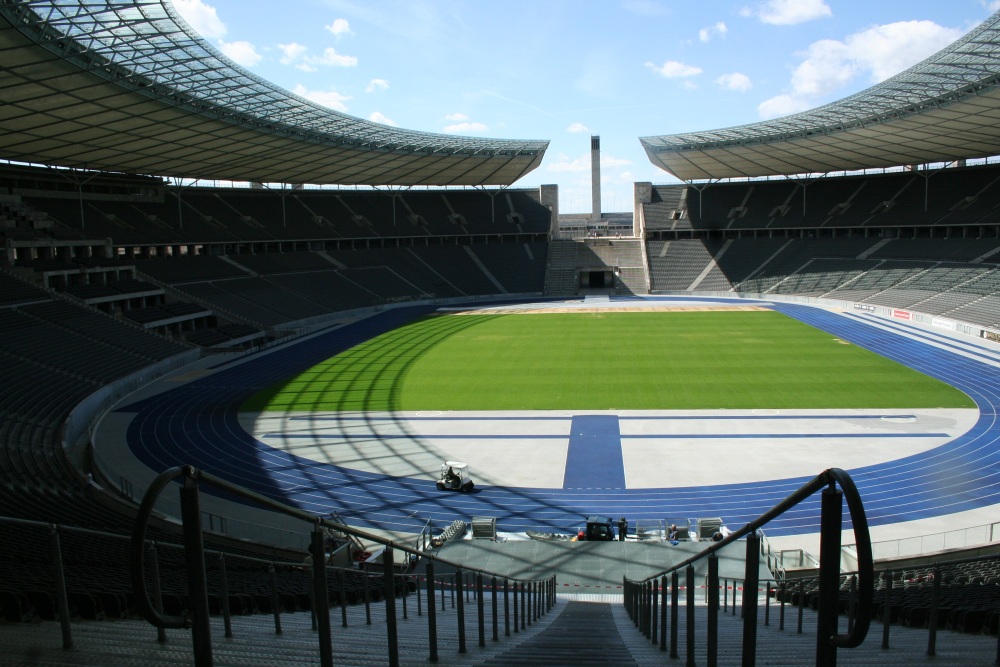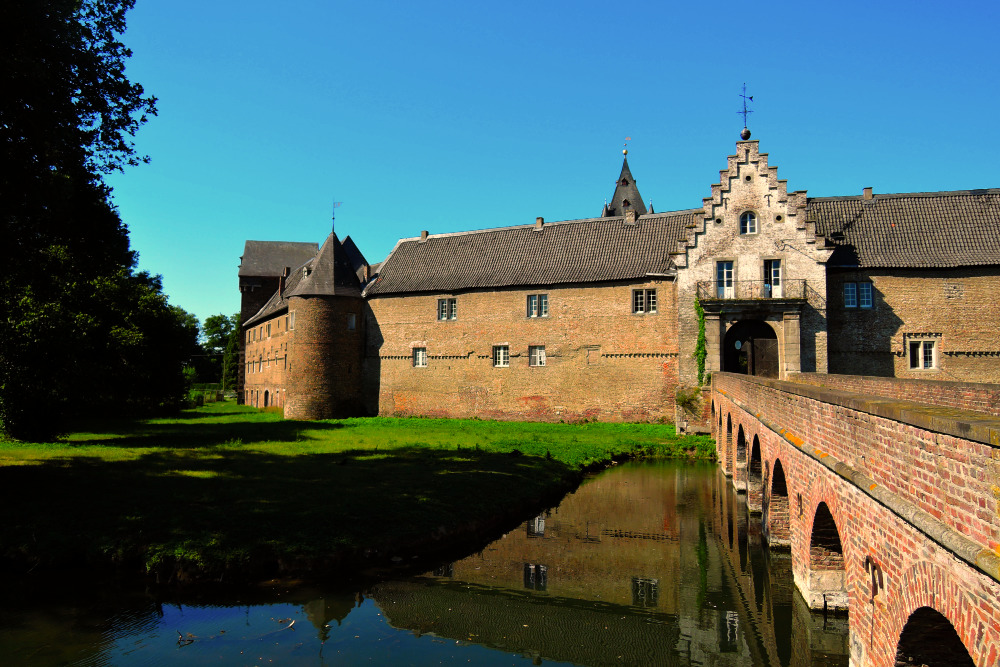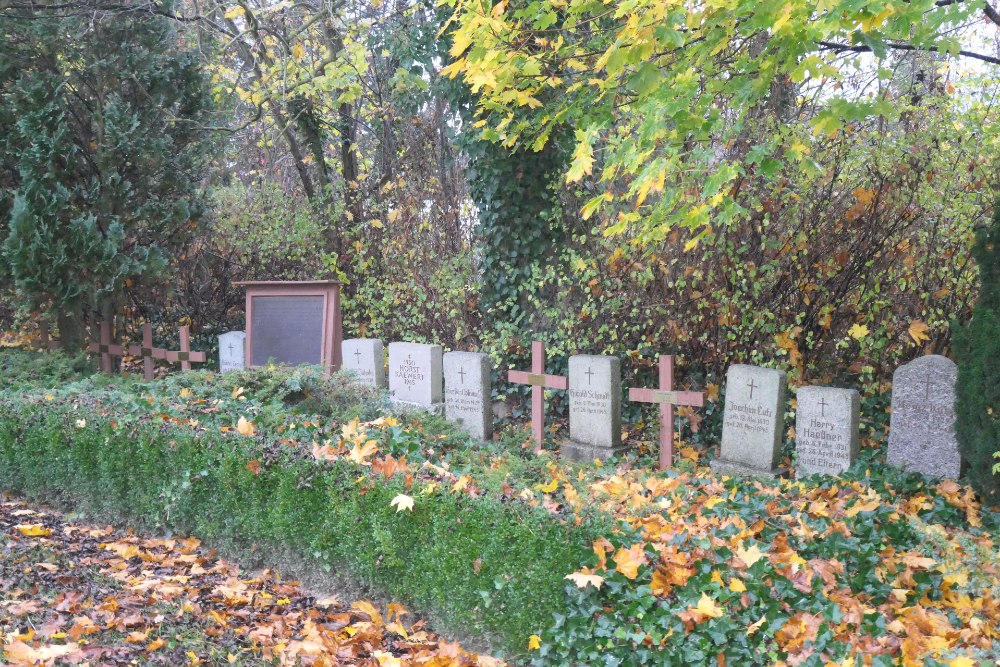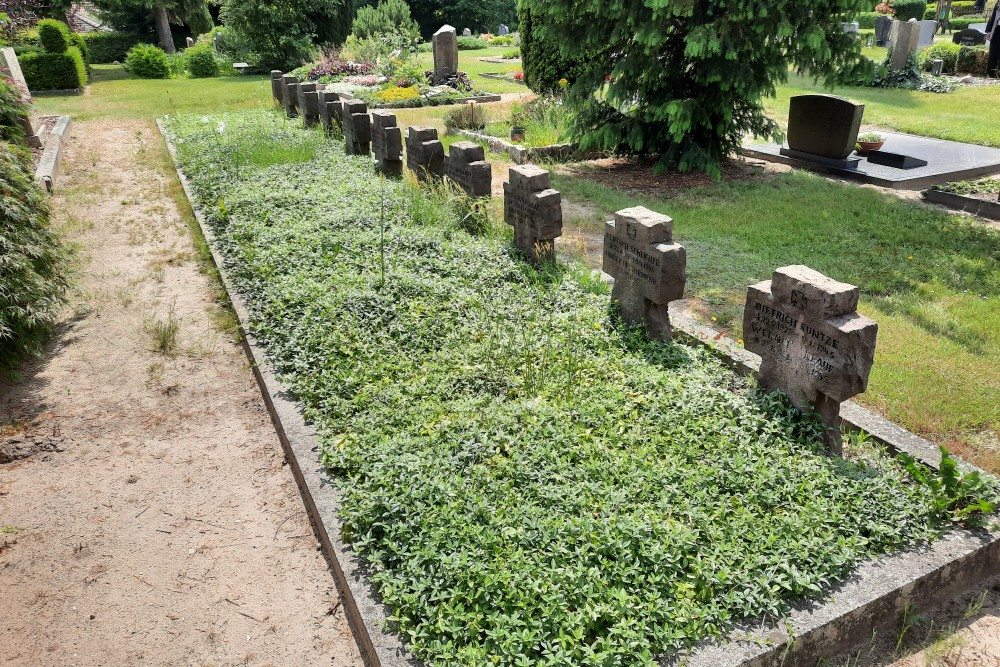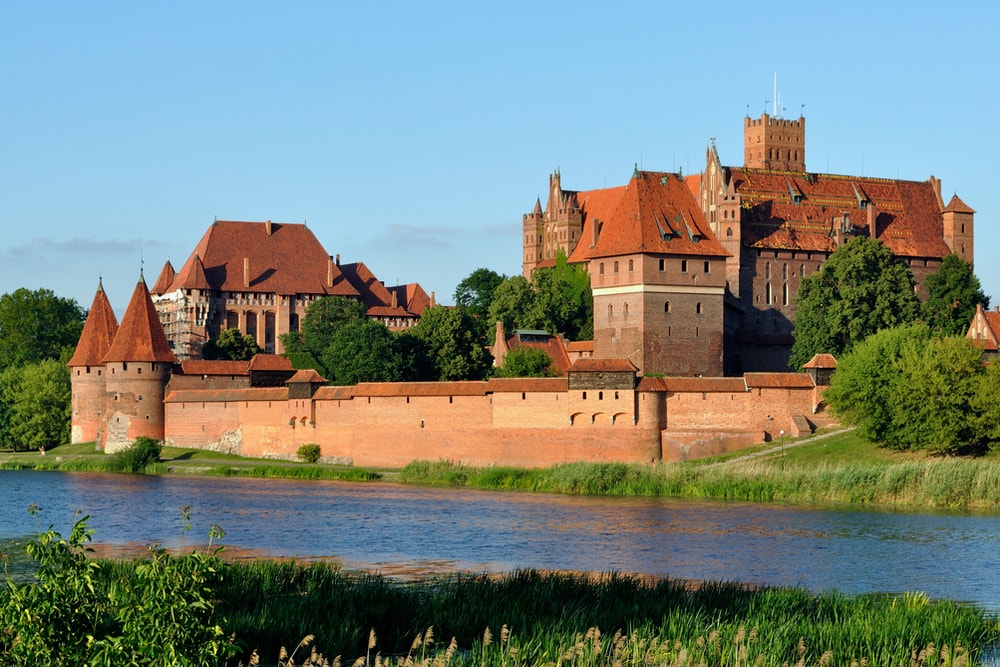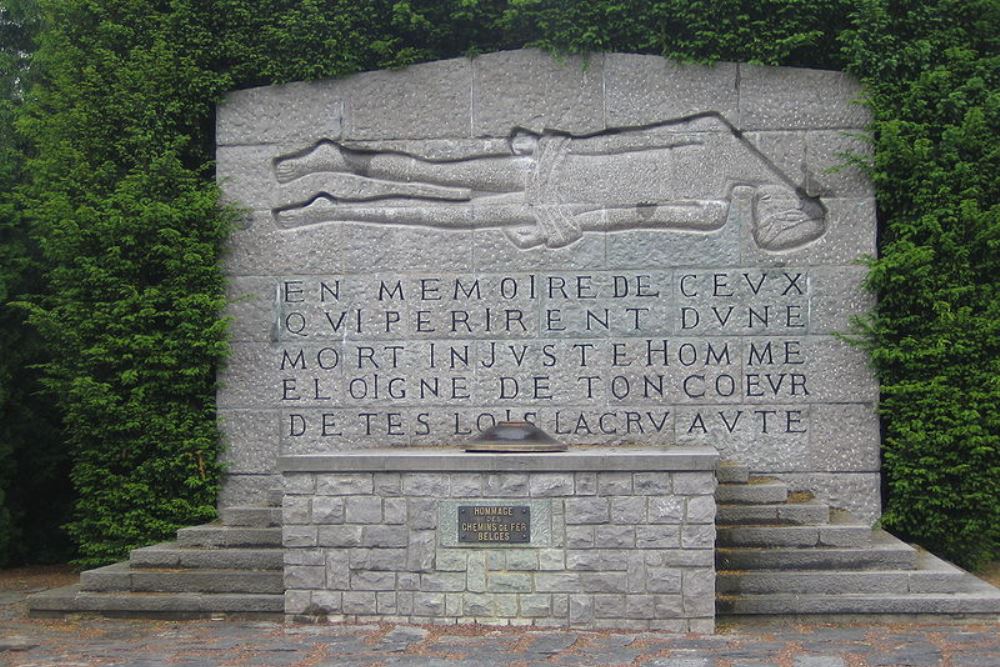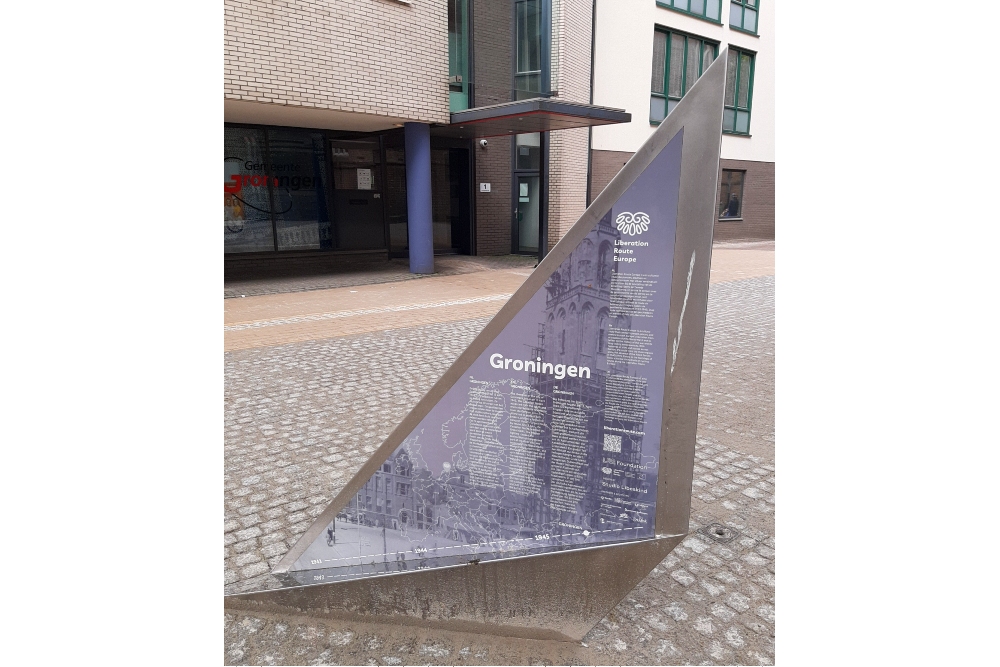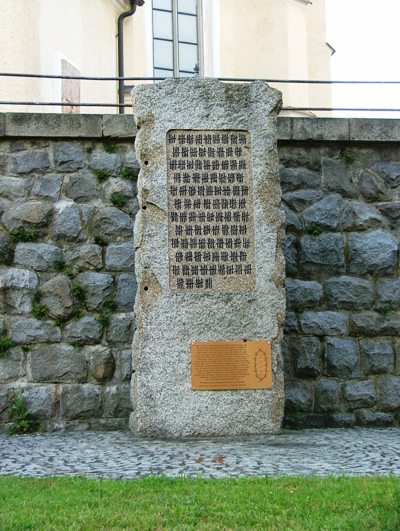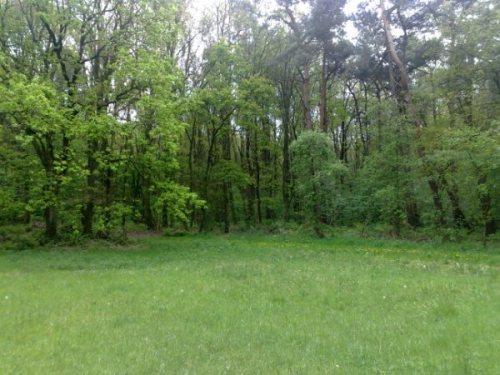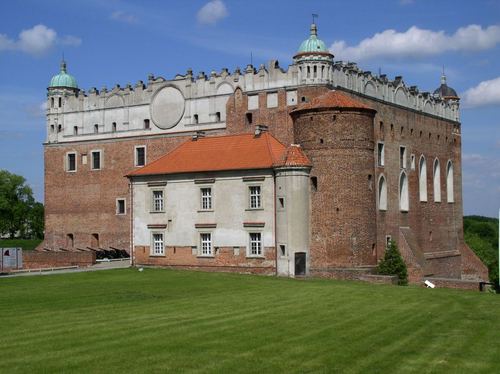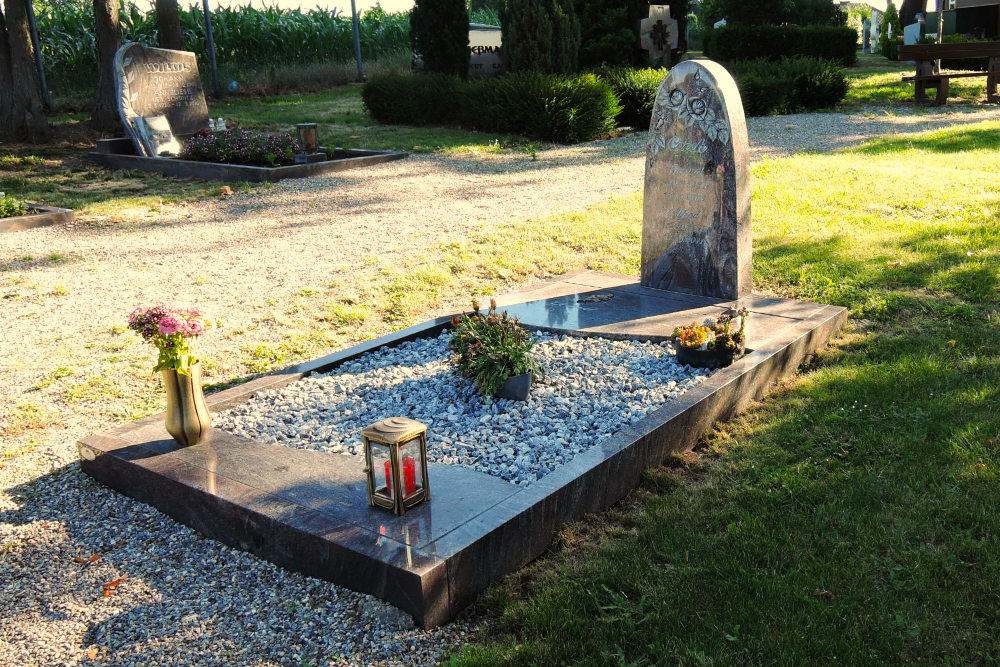Table of contents
"You, my youth, are the most valuable guarantee for the future of our nation and you are predestined to become the leaders of a glorious National socialist society. Never forget this: One day you will dominate the world"
Adolf Hitler in a speech on the party day in Nuremberg, September 10th, 1938.
The Hitler Youth (HJ) was the youth organization of the N.S.D.A.P. Ultimately, the entire German youth (except Jews) was incorporated in this organization and from the age of 10, they were molded after the Nazi ideals, both mentally and physically. Intellectual training was used to indoctrinate the youth with the Nazi ideology while the physical aspect aimed mainly at paramilitary training. The youth was to be made ready for a future in would they serve Hitler’s Third Reich as loyal and well trained soldiers.
Images
Birth of the Hitlerjugend
The roots of the Hitlerjugend can be traced back to the youth movements that had been established prior to World War One. This shows the importance of youth organizations in German society and the popularity they enjoyed before the rise of the N.S.D.A.P. So, in 1896, Der Wandervogel (Roving birds) was established. This group strove for more direct involvement with nature. They glorified for instance the self supporting life, living off the land in the middle of nature. They rejected strict authority, from society as well as from their parents and could not find peace in an individualistic society, formed by the industrial revolution.
Der Wandervogel characterized itself for instance by the shorts and walking boots the boys wore and the farmer’s attire the girls appeared in. Their love of nature became evident in trips on which they spent a number of days in the countryside without the usual aids. They sang German folk songs around a camp fire, slept beneath the stars and adopted the habit of greeting each other with "Heil" (hail). Between 1900 and 1914, the movement expanded rapidly and other social groups gladly followed suit. A wide variety of youth movements was established and expanded further, among them the Catholic youth movements, the Scouts and various other political, religious and even paramilitary groups.
Germany’s defeat in the First World War in 1918 triggered a radical splintering of German society. In particular political groups polarized enormously. Everyone had his own ideas about how Germany should be ruled. In order to promote and realize those ideas and to lay a solid foundation for power at the same time, it was attempted to mobilize youth. The Young Socialists, Young Democrats and the Young Conservatives were the largest political youth movements. They adopted a military style by dressing in military uniforms and developing a strict hierarchy within the organization.
Establishment of the Hitlerjugend was initiated by Gustav Adolf Lenk. As a 17 year old boy he made his living by polishing pianos. In the fall of 1921 he became interested in the N.S.D.A.P. after having attended a speech by Hitler. When he applied for membership in December he was rejected because he was not yet 18. When he answered he would join the youth movement in that case he was told such a thing did not exist. If he was that keen to join the youth corps of the N.S.D.A.P., so he was told, he would have to establish it himself.
In March 1922, the establishment of the Jugendbund der N.S.D.A.P. (Youth movement) was announced in the party paper Der Völkische Beobachter: "We ask the National Socialist youth and all other young Germans between the ages of 14 and 18, regardless of class or profession, whose hearts suffer from the distress and the privations that grip our nation and who want, in the future, to be incorporated in the ranks of the warriors against the Jews, the sole reason for our recent shame and suffering, to join the League of Youth of the N.S.D.A.P."
On May 13th of the same year, the Nazis rented the Bürgerbräukeller in Munich to announce the establishment of the youth movement to a large audience. The initiative was not received overly enthusiastic, in the audience, only 17 youngsters were present. Many a Nazi was skeptical about the success of a youth movement because too many existed already and moreover, they were extremely well organized. However, despite the wide spread skepticism about the fledgling youth movement, an important event had taken place: the predecessor of the Hitlerjugend was born.
Images
An expanding youth movement
Despite the criticism, Lenk pressed forward enthusiastically and divided the Jugendbund into two departments: the Jungsturm Adolf Hitler for those between 14 and 16 and the second, the Jugendbund for those between 16 and 18. Because of the meager membership, the real success for the youth movement failed to materialize for the time being. Lenk may not have been fully aware of this as he had a magazine published entitled Der Nationale Jungsturm in the spring of 1922. Owing to lack of subscribers he could not meet the expenditures and the magazine was renamed Nationalsozialisticher Jugend on August 12th, 1922. Success again failed to materialize however and ultimately the magazine ended up as an appendix to the Völkische Beobachter.
On November 9th, 1923, Hitler and 3,000 other Nazis marched to the Bürgerbräukeller in Munich in order to disrupt a political meeting, chaired by the Bavarian delegate Gustav von Kahr. It was intended to overthrow the Bavarian government and commit a coup d’état. It failed however and Hitler had to flee in order to avoid being arrested. Two days later he was picked up anyway and after a trial lasting five weeks, he, along with a number of other party officials, was convicted. He was sentenced to five years imprisonment of which he would serve only eight months. This proved long enough though to write his political autobiography Mein Kampf.
In addition to the conviction of Hitler and other Nazis, the N.S.D.A.P. was banned by the court. This meant that Lenk’s youth movement was also declared illegal. During the period in which Hitler served his sentence in Landsberg am Lech, Lenk attempted to establish a similar movement twice. His attempts at using non descript names for his new youth movements came to naught: the Patriotisches Jugendverband Gross Deutschland as well as the Grossdeutscher Jugendbund, were soon prohibited by the Bavarian court. The assumption that these organizations were just a cover for the former Jugendbund der N.S.D.A.P. caused the judge to convict Lenk as well. Just like Hitler, Lenk was imprisoned in Landsberg. Not long after Hitler had been released ahead of time on December 1st, 1924, Lenk also gained his freedom.
Hitler soon proved he could not care less about the ban on the party, imposed by the court and so, he again focused on the N.S.D.A.P. which was re-established on February 26th, 1925 and the youth movement, now renamed Grossdeutsche Jugendbewegung (Greater German youth movement) was rehabilitated on July 4th, 1926. It appeared however that the leaders of the N.S.D.A.P. envisaged another leadership for the youth movement. Lenk fell from grace as he would have acted too independently and because of his criticism of Hitler. He suggested namely Hitler was incapable of absolute rule over the party. Soon rumors circulated to the effect he was a traitor to the party.
Lenk lost his power and had to give up his seat to Kurt Gruber, a 21 year old law student who had joined the party in 1923. He turned out to be a competent leader who fitted well in the party ideology the youth should have to follow. On July 4th, 1926, the Grossdeutsche Jugendbewegung was renamed Hitler Jugend, Bund deutscher Arbeiterjugend, in short the Hitlerjugend or HJ. Gruber was appointed Reichsführer der Hitlerjugend and incorporated in the overall leadership of the N.S.D.A.P. as advisor on youth matters. His organizational talents did not remain dormant for long and it also shows in the statistics. In his first two years as leader (1927-1928), the size of the movement increased tenfold. In 1929, this number rose with another 30%. Thereafter, Gruber introduced the uniform based on that of the SA. Subsequently, he structured the Hitlerjugend after the organization of the N.S.D.A.P. 14 branches were established which would aim at fields such as sports, press, propaganda, education and culture.
Although the prestige of the Hitlerjugend grew steadily, the organization hardly came into the spotlights. As late as August 19th and 20th ,1929, the Hitlerjugend was granted a somewhat larger but still insignificant role within the N.S.D.A.P. Along with 30,000 members of the SA, 300 boys marched to Nuremberg to take part in the second Nazi party day. Two years later, 2,000 members of the Hitlerjugend were given a bombastic reception on the fourth, this time the grand party day of the N.S.D.A.P.
The Hitlerjugend continued to grow. In connection with the Volksgemeinschaft (People’s society), promoted by Hitler and his followers, Gruber also looked outside Germany’s frontiers for boys who, as ethnic Germans, were eligible for membership. Contact was made with youngsters from the Sudetenland in Czechoslovakia and in Polish provinces that had belonged to the German Empire up to the First World War.
The Wall Street crash of 1929 triggered a global economic depression and Germany was hit particularly hard. The Nazis managed to exploit the crisis very well and thereby expanded their power base considerably in an extremely short time. In the Hitlerjugend, things did not proceed that well. In 1932, at the time of the elections between Reichspräsident Von Hindenburg and Adolf Hitler, authorities feared that the militant nature of the SS and the SA might well lead to undesired excesses. Hence, on April 13th, 1932, both the SS and the SA were prohibited by the court. As the Hitlerjugend was entirely subordinate to the SA, the youth movement was declared illegal as well.
The ban did not have the effect the authorities had wished for. The Hitlerjugend continued underground with different aliases such as Die Naturfreunde (Friends of Nature). Although the authorities did not fall for it and declared the underground organizations illegal, the Hitlerjugend gained popularity. In particular their paramilitary display, which became more evident after that period, drew new youngsters to the movement. The ban on the Hitlerjugend (and on the SS and SA as well) was far from being adhered to strictly by the authorities and on June 17th, 1932, the ban was lifted by sitting Reichspräsident Franz von Papen in a diplomatic effort to calm down the political emotions as much as possible.
In the national elections of September 14th, 1930, the Nazis won over 6,4 million votes, nearly eight times as many as in 1928. Owing to the success the Hitlerjugend enjoyed during that period, two prominent candidates coveted the post of Kurt Gruber: Ernst Röhm and Baldur von Schirach (Bio Schirach) Being the leader of the SA, Röhm wanted to incorporate the Hitlerjugend in his paramilitary unit, although the Hitlerjugend was already subordinate to the SA. Baldur von Schirach saw it as an excellent chance to mobilize the youth for Nazism.
Although Gruber was not impopular among Nazi leaders or achieved bad results, he did have to cope with strong competition from Baldur von Schirach, a rising star within the N.S.D.A.P. Von Schirach was 18 years of age when he enrolled in the N.S.D.A.P. in 1925. Son of a theatre manager who had previously served as a Prussian officer and of a mother whose family pedigree went back as far as two signatories of the American Declaration of Independence, Von Schirach was born and bred in an aristocratic environment. He mastered the English language faster than the German and occupied himself mainly with literature, art and the theatre. At the age of ten he joined a Wehrjugendgruppe, a youth association where children of an early age were acquainted with military exercises. From his early teens onwards, he kept himself busy with anti-Semitic and similar works that fed his anti-Semitism and distaste of Christianity and his own aristocratic origins from an early age onwards.
In 1925, at the age of 18, Von Schirach made the acquaintance of Hitler. When a year later, in 1926, he took his gymnasium diploma, he was advised by Hitler to study German folklore, the history of art and English literature. His talents for organization and his glorification of Hitler soon gained him a lot of prestige. On July 20th, 1928, he was appointed Führer des Nationalsozialistischen Studentenbundes (Leader of the Nazi Students Union). In this capacity he could put his talents for organization to the test by mobilizing students to the Nazi cause. Owing to the good results he achieved and to his continuous glorification of Hitler in his romantic poems, he was invited to the Berghof more often.
Gruber soon realized Von Schirach was a threat to his position. In an attempt to raise the prestige of the Hitlerjugend even further, he started two new papers: Die Junge Front (The young front) and the Hitlerjugend Zeitung (the Hitlerjugend paper). None became successful. When in April 1929 the Nazis declared the Hitlerjugend the only official youth movement of the N.S.D.A.P., although no other Nazi youth movements existed at the time, Gruber’s position seemed safe for the time being. In three years time, from 1926 to 1929, he had managed to raise the membership from 700 to 13.000. However, that number was still nothing compared to the 4,3 million youngsters in Germany.
The internal competition made Gruber a desperate man. He promised Hitler to double the membership of the Hitlerjugend within a year. The criticism he received from various sides had already undermined his authority in such a way that the situation looked hopeless for him. After three years of leadership, he was ousted by party leaders of the N.S.D.A.P. In October 1931, the head office of the N.S.D.A.P. in Munich announced that Gruber had submitted his resignation. That was not true however. He had simply lost their confidence and Hitler appreciated Von Schirach’s vision more. The young aristocrat was appointed Reichsjugendführer (Youth leader) of the N.S.D.A.P. at the end of October.
Images
Organisation
In 1931, Von Schirach restructured the Hitlerjugend in such a way that from then on, a larger part of German youth could be mobilized. The Hitlerjugend was enlarged with the Jungvolk for boys between 10 and 14. The two different branches of the Jugendbund were joined in a new department, to which the 14 to 18 year old belonged and was given the name Hitlerjugend or in short HJ. Boys between 6 and 10 were allowed to attend informal meetings and activities. There they were made enthusiastic for trips to the countryside, exercises with arms and competitions in sports. From then on, more attention was paid to political indoctrination by means of chanting Nazi slogans and singing of nationalist folk songs during trips. Specific political indoctrination took place at the so called Heimabende (home evenings) where Hitlerjugend leaders in special Hitlerjugend houses taught their young audiences Nazi ideology by means of speeches. These evenings were set up according to a strict schedule. The leaders of the Hitlerjugend received magazines containing what their subordinates should be taught. Each magazine dealt with a specific theme based on Nazi ideology. Members were taught for instance the role of men and women in society, the prestige of the German army and the enemies of Nazism. Each boy who formally belonged to the Hitlerjugend was given a so called Leistungsbuch (record of achievement) in which his achievements in sports as well as his political indoctrination were recorded meticulously.
In addition, in July 1929, a branch for women was created. Girls between 10 and 14 belonged to the Jungmädelbund (JM, Union of young girls) and those between 14 and 18 belonged to the Bund Deutscher Mädel (BDM, Union of German girls). The female branch of the Hitlerjugend was particularly suited to prepare its members for the role of women in the kind of society the Nazis had in mind. According to the Nazis, the primary role of women was to give birth to racially pure, healthy and strong children and subsequently raise them according to Nazi ideals. Thereby they would fulfill a role in which they were almost entirely subordinate to men. While the men extended the German Empire, the women would take as much chores as possible away from them by taking on housekeeping and raising of children.
The Nazis wanted to create an army of political soldiers. Soldiers who had undergone a rigorous military training, loyal to the Führer and his regime and in excellent physical condition would be able to help build a new powerful Germany. In 1934 therefore, the emphasis on activities of the Hitlerjugend moved from trips to the countryside and the singing of camp songs to paramilitary training. The trips turned into military bivouacs with roll call every morning, marching music, weapons training, map reading, navigation and daily marches. Specialized units were created so the Hitlerjugend could form a recruitment pool for the various branches of the army. One of the most popular branches was the Flieger HJ where the youngsters were taught the basic principles of flying in gliders. The Motor HJ was, just like the Flieger HJ an elite unit in which the boys learned to ride a motorcycle. In northern Germany, the Marine HJ was rather popular. The members there trained in sailing boats and kayaks and where thus prepared for service in the Kriegsmarine. There also was a unit in which boys were taught military communication by radio telephone and Morse code. The musically talented were recruited for the musical division that played military music during various events. The possibility to be active within these units made many boys eager to join the youth movement.
In addition, a speakers corps was formed. This was a branch of the propaganda department which was founded by the Reichsjugendführung (youth leadership) in conjunction with the Reichspropagandaleitung (propaganda leadership). Potential speakers were not only judged for their oratory talents but also for their mastery of the Nazi ideology. In order to become a speaker, the youngsters had to have been active in the Hitlerjugend for a considerable time (a few years at least. They could work their way up from the speakers circles, through the departments and finally to the regional group. The nationwide level, the state group was the final stage for the most gifted speakers. The speakers had to indulge themselves in Nazi lecture as much as possible and also keep track of social developments through papers and magazines. In 1937, there were 550 active speakers who traveled up and down the country to spread the Nazi message. From these, a hundred were considered so good, they were incorporated in the N.S.D.A.P. as official speaker. They delivered speeches at meetings and party days where they made a contribution to the creation of an almost religious aureole around the Führer, Adolf Hitler.
In 1936 Von Schirach set an ambitious goal for himself and his movement: to incorporate all 10-year-old boys (except Jews and other undesirables such as Gypsies and the disabled) in the Hitlerjugend in that year. He hoped to be able to give a suitable birthday present to the Führer that way and subsequently proclaimed 1936 "Year of the Jungvolk".
Considerable pressure was brought to bear on those youngsters, who were not yet members, to register for membership. A wide variety of promotional activities such as propaganda marches and mass meetings, making the public enthusiastic for characteristic Hitlerjugend activities, shrouded the fact that potential members more often than not were forced by Nazi teachers and Hitlerjugend leaders to become members. At Hitler’s birthday that year, April 20th, a solemn ceremony was held at Castle Marienburg where a group of 10-year-olds pledged their fresh membership. The castle was built in the 12th century and at that time belonged to the Teutonic knights who had participated in the crusade of Christianity in an attempt to convert the Arab world. Under a flourish of trumpets and ominous drumbeats, mystically illuminated by burning torches all around them and in the presence of the blood banner (the flag Hitler had flown during the failed putsch on November 9th, 1923 and which was supposedly drenched with blood of the Nazis who had lost their lives in the coup, the 10-year-olds pledged their oath of allegiance:
"On this Bloodflag that represents our Führer, I swear to devote all my energy and power to the savior of our country, Adolf Hitler. I am willing and prepared to given my life for him, so help me God Almighty."
The ceremony was concluded by singing the Fahnenlied (flag song) written by Von Schirach.
On December 1st, 1936, Hitler issued the Hitlerjugendgesetz (Law on Hitlerjugend). According to this law, the entire German youth (both boys and girls, except Jews) were obliged to become members of the Hitlerjugend. Henceforth, the youth from the age of 10 and upwards would be raised "physically, mentally and morally in the spirit of Nazism in order to serve the Fatherland and the Volksgemeinschaft." Also under this law, all other still active youth organizations were banned such as the Scouts, the Catholic Youth Movement and a few smaller youth organizations. After the Sudetenland and later on Austria had joined the Reich, the population grew with a large number of ethnic Germans. Those youngsters between 10 and 18 would also be incorporated in the Hitlerjugend. As a result, membership rose to 5,9 million the following year, 1937.
The law of December 1936, making membership mandatory, did not by far yield the desired result. There were still children who evaded obligatory membership as their parents kept them at home. A new law was issued on March 25th, 1939, enforcing membership even stronger. Parents were urged to register their children if they wanted to prevent them from being placed in assembly homes and orphan’s homes. The parents themselves risked a considerable fine or even imprisonment if they opted to keep their children at home. Early 1939, the Hitlerjugend numbered 8,7 million active members (including those from Austria and the Sudetenland). Hence, almost the entire youth, numbering some 8,87 million had been incorporated in the Hitlerjugend. Only the "undesirable minorities" such as Jews, were excluded.
Images
Life in the HitlerJugend
Life in the Hitlerjugend changed for the members into a military existence as the party leaders of the N.S.D.A.P. and the German army prepared for war. Trips to the countryside were increasingly replaced by military bivouacs and more emphasis was put on competitive sports activities. In 1933, Hitler wrote to Hermann Rauschning, chairman of the Senate of the Free City of Danzig:
"I will fully train the youth in all physical activities. I want an athletic youth, that is the most important. In this way I can erase thousands of years of taming of humans. And then I shall have the pure and noble natural material with which I can create the new order. Schooling and education in a nationalist state must be targeted first and foremost on the creation of extremely fit bodies and not on filling pupils with all sorts of knowledge. Intellectual education will not be part of it. An aggressive, active, dominant, tough youth, that is my goal. The youth must be indifferent to pain. There can be no weakness or softness. I want to see once more the proud and independent look of the predator in the eyes of the youth."
Boys of the age of 10 who joined the Jungvolk - the Pimpfen - had to undergo a stage in which they were trained by elder Hitlerjugend leaders. They had to master the Nazi principles within a very short time by reciting the verses of the Horst Wessel song and answer questions about Nazi ideology and the history of the N.S.D.A.P. correctly. Physical requirements for the 10-year-old were laid down in the so called Pimpfenprobe (children’s test). This required them to sprint 65 yards in less than 12 seconds, make a long jump of 3,01 yard, throw a small ball at least 27,3 yards and complete a march of a day and a half. Subsequently they took the Mutprobe (test of courage). This entailed jumping over a campfire or from the first or second floor of a building, subsequently landing on a sheet held up by other members. After they had sworn their oath of allegiance, they were given the famous brown uniform and the dagger with the inscription Blut und Ehre (Blood and honor).
Afterwards, a life mainly consisting of physical training awaited the newly sworn in. These physical exercises entailed strict discipline. Horst Lippmann remembers his time in the Jungvolk:
"We had to report to the hall of the Jugendschargruppe, correctly dressed in uniform. We reported as follows: one of us knocked, I opened the door; next we had to stand rigidly at attention, present the Hitler salute and call out ’Junggenosse Lippmann bittet um Erlaubnis eintreten zu dürfen’ (Junggenosse Lippmann requests permission to enter). The five to six years older Fähnleinführer then answered ‘Eintreten.’ He read to us about Adolf Hitler and the rise of the Third Reich. The most important aspect within the Jungvolk was the Wehrtüchtigung (Military training). To that end we often had to fall in on the sports square Friedrichshöh, dressed in sports attire. After changing in the locker room, we had to warm up first, then we did exercises such as jumping, running or throwing a ball. More often that that we made trips and played war games in Wohldorfer forest, of course in a clean and crisp uniform. The war games entailed hiding behind trees and bushes and training in methods of camouflage and observation. We were also taught how to take prisoners."
After boys had passed the Jungvolk they were allowed to join the real Hitlerjugend for the 14 to 18 year old.
Much importance was attached to mutual competition. The aim was to imbue the youth with an inflexible winners mentality. Among boys as well as girls, almost any activity was turned in some sort of competition. Not only sports, but also the contribution of youth to agriculture and other sectors of the labor market, singing during propaganda marches and fundraising for the Winterhilfe program were subjected to a strong competitive element. This competition was not only visible in the Hitlerjugend but in entire society. In the spring of 1933, the Nazis introduced the Reichsberufswettkampf. This professional competition was a Nazi method to test the professional abilities of large number of participants. The poorly educated as well as the highly educated were thus given the chance to compete against others in their profession.
The Nazis considered the molding of youth an education where the physical condition was of utmost important and not the development of the mind. The Nazi anti-intellectualism restricted the reading matter of the young minds to a meager number of Nazi approved lecture. In their opinion, youth could spend their time better with training and maintaining their bodies. In Mein Kampf, Hitler wrote: "A less educated but physically sound individual of a strong and stable character, possessing energy and perseverance is far more useful to the Volksgemeinschaft than an intellectual weakling."
Next he underlined the importance of physical exercise by arguing that this contributed to the self confidence of the individual: "…this self confidence must be ingrained in every German youngster at an early age. His entire education must be aimed at convincing him of his absolute superiority to others."
The timetables of schools were adapted in such a way that the children did physical exercises for an hour both in the morning and in the afternoon after school hours. Boxing in particular was encouraged among the Hitlerjugend in order to stimulate their aggressiveness and boost their self-confidence. Other sports, such as athletics and swimming were practiced by the Hitlerjugend up to the point of physical exhaustion. All this was intended to strengthen the body as well as the mind as much as possible.
In order to stimulate the athletic youth Hitler had in mind, Von Schirach organized so called weekend camps where the young members made trips through the countryside. Much attention was given to team building and team spirit. In the evenings, camp fires were lit and songs were sung. These songs were of course drenched with Nazi sentiments. The camps served an important purpose for the Nazis: the elimination of social differences. They hoped to achieve this by equal treatment for all (no privileges for the more wealthy). The memoirs of Werner Mork show that the Reichsjugendführung succeeded not unmeritoriously in this:"…what pleased us and me in particular very much was the equality among all boys. There was no question of distinction among each other, despite the great diversity in origin. Children and youngsters from all regions came here to serve in the Hitlerjugend in which they were all considered equal, whether they came from bourgeoisie of workers families, whether they were poorly or highly educated, there was no question of disturbing distinction, no special treatment, the status of their parents did not matter at all and any boy could become a leader, regardless of his origin or schooling."
In the camps, much attention was given to sports. Even competitions were held in which members could win highly coveted medals of achievement. Above all however, attention was given to the military training of the youngsters. The emphasis on military values and development increased steadily and would take on ever more drastic forms towards the end of the war. The military aspect of life in the Hitlerjugend was characterized by discipline and obedience towards the authorities and by the possibilities provided by the Flieger- Marine- und Motor Hitlerjugend. In addition, the members of the Hitlerjugend quickly became acquainted with fire arms, something which greatly appealed to many boys. Although (para)military exercises were not unknown within other youth organizations, according to Werner Mork, within the Hitlerjugend there was question of: "service in the real sense of the word, based on the principles of military exercises. […] It must be noted that the military aspect pleased the children very much. We very much enjoyed taking part in all this, standing rigidly at attention and going on marches."
Images
Youth terror
The Hitlerjugend was far from being a respectable and orderly organization. Just like in the SA, known to the public as a brutal and violent organization, excesses and violence were common.
In 1929, author Erich Maria Remarque published his book ‘Im Westen nichts neues"(Nothing new in the West). The strongly pacifistic book is about a young man who, with his school friends, is encouraged by his teacher to join the army and fight for the German cause. His experiences in war however are diametrically opposed to the Roman adagium the teacher preaches to his pupils: Dulce et decorum est pro patria morte, meaning it was good and expedient to die for the Fatherland. The Nazis did not want to have anything to do with this kind of literature owing to the pacifist sentiments. After the book, which had become a bestseller meanwhile, had been made into a movie which played in the cinemas, groups of boys from the Hitlerjugend disrupted the shows in various cities in Germany.
It goes without saying that mutual rivalry existed between the youth movements prior to the seizure of power by Hitler. The polarized political differences in the Weimar Republic seeped through in the youth movements of the various parties. This mutual hostile attitude manifested itself in violent street brawls. Between 1931 and 1933, 23 boys of the Hitlerjugend died as a result of that kind of violence. The best known example is that of Herbert Norkus, a 12-year-old member of the Berlin Hitlerjugend. As he tried to evoke interest among the population for an anti-Communist meeting of the N.S.D.A.P. on Sunday morning, January 26th, 1932, he was suddenly attacked by young Communists while he was out on the street without his companions. He was ambushed and stabbed with knives twice. He managed to reach a nearby house where he rang, bleeding profusely. The inhabitant though closed the door quickly on discovering what was going on. Subsequently, Norkus was stabbed another five times. He struggled to get to his feet and in an attempt to seek help, he collapsed in the nearby Zwinglistrasse. He died on the spot and left a lugubrious trail of blood in the streets of Berlin. It is said, his upper lip had been cut off by the Communists and his face had been maimed as well.
The Nazis grasped the opportunity to make him a martyr of their movement. In four months time, novelist Karl Alois Schenzinger wrote a story that periodically appeared in the Völkische Beobachter in parts and subsequently was published as a book. Later on it would be mandatory reading for members of the Hitlerjugend. The book was soon made into a movie entitled ‘Hitlerjunge Quex’ in which with the demise of the boy was portrayed in a near mythical symbolism. Norkus’ status as a martyr was exploited in emotional speeches by Nazi leaders, marches and memorial services. He even got his own holy day, henceforth on January 24th, he and other deceased members of the Hitlerjugend would be commemorated.
Even in the Hitlerjugend itself, activities not always proceeded in an orderly fashion. During paramilitary training, in which two groups were pitted against each other, trying to tear away their red or blue armbands, things often got out of hand. As the organization had taught the boys to be keen on victory, and not shy away from any means to achieve it, the armbands of the younger and weaker were often brusquely torn off them. Fights between both groups often broke out, stimulated by the leaders.
In the fall of 1934, the HJ Streifendienst was established. This internal political police force would see to it no dissidence should occur. The effectiveness of the indoctrination, which membership of the Hitlerjugend entailed, is evident from the fact that members of this Streifendienst even reported next-of-kin like friends or family in a number of cases. Walter Hess for instance, member of the Hitlerjugend, reported his father after the latter had called Hitler a crazy idiot. His father was subsequently arrested and taken into Schutzhaft (preventive arrest) in Dachau concentration camp.
During the notorious Kristallnacht - the massive pogrom against Jews in the night of November 9th and 10th , 1938, after a 17 year old Jew, Ernst vom Rath, had shot a secretary of the German Embassy in Paris - much damaged was inflicted and many Jews were ill-treated by members of the Hitlerjugend. Joseph Walfort was six years old when members of the Hitlerjugend ransacked the family house during the Kristallnacht:
"Finally they barged in and made a lot of noise by breaking windows and smashing furniture. Next they came upstairs where we were hiding, they saw us but did nothing because there were no grown up men with us. After they had left we went downstairs and discovered complete chaos. The first thing I noticed was my wardrobe lying on the floor. My clothes were all over the place and even my beloved toy train was smashed."
Images
Sexual morale
An issue the highest leaders of the Hitlerjugend were soon confronted with, was the liberal sexual morale among the boys and girls in the Nazi youth movement. The Reichsjugendführung refused to provide sex instruction to the members of the Hitlerjugend as they considered this a task of the parents. Parental authority meanwhile had been undermined by the youth movement in such a way however, it was unlikely that many youngsters had been given sex instruction. In 1934, there was talk of promiscuity within the N.S.D.A.P. as well as in the Hitlerjugend. It looked like the youngsters, now that the role of their parents had been severely limited by the Hitlerjugend, saw possibilities to be sexually active at a young age. In Mannheim for instance, 25 15 and 16 year old girls became pregnant in 1935. In nearby Chemnitz, a pregnant girl, after having been asked who the father was of the newly procreated child, said that 13 boys were eligible. Between 1932 and 1936, when membership increased drastically (see appendix) and subsequently mass meetings were held, with large numbers of youngsters in attendance, the number of pregnant girls under age got out of hand. During their stage in the so called Landdienst, when the girls were employed on a farm for a certain period, usually a year, the members of the B.D.M. were housed not far from the boys’ camp and often dozens of teenage girls returned home pregnant. During the party day in Nuremberg in 1936, 900 B.D.M. girls got pregnant and only half of them could tell who the father was.
Then there also was the issue of homosexuality in the Hitlerjugend. The Nazis vehemently opposed homosexuality and they laid down by law that such practices were punishable by long imprisonment. In cases of suspected homosexuality, leaders of the Hitlerjugend were promptly degraded and when the charges proved correct, younger members as well as leaders faced long periods of imprisonment which could last for years. Cases of homosexuality were swept under the rug by Joseph Goebbels (Bio Goebbels) and the press. In 1935, a boy was stabbed to death after he had been sexually abused by a number of other boys. After the boy’s mother had heard what had happened to her son, she reported the case to Reichskommissar Mutschmann. Goebbels had her arrested and she was subsequently kept imprisoned in order to prevent the scandal from becoming known publicly.
During the war, many B.D.M. girls made use of their tender age as well as the right to travel unhindered to almost any place in connection with their B.D.M. activities. They visited soldiers who had just returned from the front and were ready for a little fun. Some girls were just 12 years of age and tried to convince the soldiers they were 16. The soldiers exploited this situation, which subsequently led to dissipation such as the use of violence and rape. Although some places, like a pleasure grounds in Dachau, soon became known for its lawns covered in used condoms, there was the issue of a disproportionate number of unwanted pregnancies and venereal diseases. Soon, the authorities spoke of veiled prostitution as the soldiers regularly paid the girls small amounts of money or gave them presents. A report from 1941 even stated that many professional prostitutes were forced to close down their brothels as the soldiers looked to the B.D.M. girls to satisfy their sexual needs. The abbreviation for the female movement was soon translated to Bund Deutscher Matrazen (union of German mattresses) and Bubi Drück Mich (Boy, hold me). Sexual liberality had seriously undermined the prestige of the movement.
It is obvious that the Hitlerjugend was anything but a respectable and orderly organization the Nazis wanted others to believe. Notwithstanding that both sexes were separated from each other within the Hitlerjugend, there was talk of many mutual sexual contacts. When there were no girls around, many boys turned to sexual contact with other boys. Fighting crime and aberrant behavior in the ranks was an issue the leaders were confronted with repeatedly. It was therefore not without reason that within the SS-R.S.H.A. (Reichssicherheitshauptamt, (head office of state security), a special department was set up, subordinate to the Reichskriminalpolizei (criminal police) and in 1940, a so called Jugendschutzlager (detention camp for juveniles) was opened in Moringen, near Göringen in Lower Saxony, destined for refractory boys who did not wish to meet the requirements the Hitlerjugend demanded of them. At least 1,400 boys have been interned in this camp of which 89 were murdered by the Nazis. During the war, more of these camps were set up. The inmates were punished by disproportionately tough physical exercises, their food was withheld, they were beaten with hazel wood sticks and got up to three weeks solitary confinement. Those who violated the rules again were castrated. The latter matched the Nazi notion that recidivists suffered from a mental disorder which made them break the law. For most inmates, extensive psychiatric examination was the next step.
Images
Resistance and dissidence
After the organization had seen a massive growth in 1937 and its paramilitary nature became more obvious, it became clear that a number of youngsters began to develop a distaste for the Hitlerjugend. So, various illegal youth movements came into being that actively attempted to undermine the authority of the Hitlerjugend or offered passive resistance by being disobedient for instance, camped in the countryside on their own initiative or organized activities after their own ideas. In 1938, social democrats reported to their leaders in exile: "In the long run, the children become irritated by the lack of freedom and the many monotonous exercises in the Hitlerjugend. It is therefore not surprising that symptoms of exhaustion manifest themselves in the ranks increasingly."
As war loomed and the Hitlerjugend was increasingly subjected to rigorous paramilitary training, the true nature of the organization emerged. The youngsters who understood this and did not wish to conform to an organization that aimed to instill norms and values in them they did not accept, attempted to turn their backs on the Hitlerjugend as much as possible and establish their own organizations. As all other youth movements had been banned by the German authorities it was nearly impossible to coordinate such organizations on a large or even national scale. In various cities, various groups were founded. In Essen they called themselves the Fahrensteuze, in Oberhausen and Dusseldorf the Kittelbach Pirates and in Cologne the Navajos. Although they differed in name and uniform and no overall administrative body existed, they considered themselves above all Edelweiss pirates. This blanket name was taken from the fact that most of them wore a medal depicting an Edelweiss flower.
In the early years of their existence and before the beginning of World War Two, the activities of the Edelweiss pirates were rather innocent. To get out from under the paramilitary yoke, the young dissidents assembled in parks for instance and organized trips to the countryside, like most had done before in the Hitlerjugend. Contrary to the Hitlerjugend, there was no separation of sexes among the Edelweiss pirates. This led to a high degree of sexual liberalism and sexual activity.
The years of war led to a more hostile attitude towards Hitler and Nazi Germany among part of the population, including the Edelweiss pirates but also among former Nazi sympathizers. In 1941, a Nazi official remarked: "Any child knows who the Edelweiss pirates are. They are everywhere, there are even more of them than in the Hitlerjugend. They beat up the patrols and are satisfied only when the rest does exactly what they want." Although his analysis of the degree of dissidence among German youth seems overdone, there certainly is a nucleus of truth in it. The Reichsjugendführung took a lot of trouble to mobilize the entire youth in the Hitlerjugend and keep the German youth in check. The Navajos from Cologne showed their dissatisfaction with the Nazi regime in their songs:
"Des Hitlers Zwang, der macht uns klein
noch liegen wir in Ketten
Doch einmal werden wir wieder frei
wir werden die Ketten schon brechen
Denn unsere Fäuste, die sind hart
ja--und die Messer sitzen los
für die Freiheit der Jugend
kämpfen Navajos"
(Hitler’s coercion makes us small, we are still in chains. One day though, we will be free again. We will break the chains all right because our fists are hard. Yes, and our knives hang loose. Navajos fight for the freedom of youth.)
In order to constrain the Edelweiss pirates, the Nazis applied harsh measures. Individuals who were suspected by the Gestapo of activities in groups other than the Hitlerjugend, were often driven together in order to humiliate them by shaving their heads in public. The more serious cases were sent to the so called Jugendschutzlager or to prison. As the war progressed and resistance and dissidence increased gradually, the Nazis did not shy away from more radical measures anymore. Heinrich Himmler (Bio Himmler) for instance ordered a raid by police on members of the Edelweiss pirates on October 25th, 1944. A few weeks later, 13 members of the Ehrenfeldergrupppe, a resistance movement in Cologne were hanged in public. Among them were six teenagers aged 16 and 17 who had been active as Edelweiss pirates.
Although groups like the Edelweiss pirates did not shy away from actively resisting Hitler and his Nazi regime, there were also groups that resisted passively by not conforming to Nazi ideology. The Swingjugend in particular is an excellent example. This group, founded in Hamburg in 1939, consisted of youngsters who liked to listen to jazz and swing music which had been banned by the Nazis. This music with its foreign influences did not match the Nazi attitude of art and culture being based on the Blut und Boden (blood and soil) values. The Nazis considered jazz and swing a form of entartete Kunst (degenerated art) as it was predominantly being composed and played by blacks and Jews.
The Swingjugend was a non-political movement and formed an antipode to the Hitlerjugend because of an entirely different life style which the Nazis considered decadent. For instance they dressed very differently from the uniform wearing Hitlerjugend and they often let their hair grow. They considered the culture of Great Britain and the United States the example of civilization and individual freedom. They frequently held jam sessions and swing parties in various places. It took the authorities not too much trouble to track them down as they often met in public buildings and did little to hide from the Gestapo. So, in the first months of 1940, 480 members of the Swingjugend were arrested in a hotel in Hamburg while they were enjoying jazz and swing music. It was a great shock for the Nazis as many of them had been or still were members of the Hitlerjugend. Not long afterwards, in May of the same year, 1,715 youngsters were picked up in Dresden for disturbing public order with their swing music. Of those, more than half turned out to be members of the Hitlerjugend.
During the war, resistance became increasingly active, also because the war for Germany did not progress as successfully as was hoped and announced. As a result, Hans Scholl, a student from Ulm and member of the Hitlerjugend, developed a distaste for the Nazi regime and his dissatisfaction only increased during the war. He was arrested in 1937 for ‘unthoughtful remarks’ and had to spend seven weeks in prison in Ulm. This however did not stop him from joining the illegal Deutsche Jugendschaft vom 1.11.1929. right after his release. It was involved in breaking into the homes of the Hitlerjugend in order to steal papers and uniforms. After military service in France as medical orderly he returned to Munich looking for contacts to possibly establish a resistance movement, in addition to his study of medicine. Ultimately his sister, Sophie and fellow students Alexander Schmorell, Willi Graf, Christoph Probst, Traute Lafrenz, Katharina Schueddekopf, Lieselotte Berndl, Jürgen Wittenstein and Falk Harnack joined the movement. In addition, Kurt Huber, professor of musicology, assisted them in their activities. They called themselves Die Weisse Rose (white rose). Most of them felt called upon to resist based on their personal experiences with the regime. Hans Scholl and Alexander Schmorell had served on the Eastern front in 1942 and had witnessed the methods the Germans took to humiliate Russian prisoners of war and transport Jews to the gas chambers. The tragic existence of Jews in the ghettoes of Warsaw and Lodz was engraved on Willi Graf’s retina.
They hoped to push public opinion in the Third Reich in a different direction by using pamphlets to undermine Nazi authority in this way. Quoting from sources such as the Bible, Aristotle, Goethe and Schiller, they hoped to reach the German population and in particular the intelligentsia. In addition they used uncensored statistics of the number of German casualties. After the Germans had lost the battle of Stalingrad on February 2nd, 1943, they grasped the opportunity to play this out in their pamphlets. On February 18th, the group again distributed pamphlets in Munich University. This was noticed by janitor Jakob Schmidt who, suspecting resistance activities, called the police. Hans and Sophie Scholl were arrested by the Gestapo and soon after, the entire group was picked up. Hans, Sophie and Christopher Probst were the first to stand trial before the Volksgerichtshof (People’s Court) on February 22nd. Chaired by the notorious Nazi judge Roland Freisler, this court handled cases concerning political resistance. They were sentenced to death by guillotine and beheaded the same day. In the following months, the remaining suspects were brought before the court. Alexander Schmorell, Kurt Huber and Willi Graff were also executed by the authorities.
Images
From child to child soldier
On September 1st, 1939, the German army invaded Poland. Two days later, France and Great Britain declared war on Germany. Although it would still take a few years before the German authorities would proclaim total war, the entire society was already closely involved in the war. That also applied to the youngsters who were active in the Hitlerjugend. They participated in a wide range of activities to lend a helping hand to the war effort and the war economy. They went by the houses for instance to collect valuable material for recycling. They scoured the countryside to collect herbs and mushrooms that could be used for medicinal purposes. In the countryside as well as in the cities, they took over the jobs of men serving in the military at that time. Thus, it was not unusual to see a boy from the Hitlerjugend as guard on trams or as postman, or see them working on a farm. As the war progressed, it increasingly took its toll of society. From then on, the Hitlerjugend was also deployed to tend to injured soldiers, reinforce defensive positions and even as firefighters.
The years of war not only caused major changes in Nazi Germany in general but also in the Hitlerjugend in particular. As war loomed on the horizon, Reichsjugendführer Baldur von Schirach gradually fell from grace with Hitler and his inner circle. Allegations about his possible feminine conduct by party officials, (rumors circulated for instance that his bedroom was painted in pink), his criticism on the impending war of aggression on the West and his affinity with and interest in western and degenerated culture, caused his prestige within the regime to evaporate and undermined his authority. In order to prove his manhood, Von Schirach enrolled in the Wehrmacht on September 1st, 1939 and subsequently took part in the invasion of France in May 1940 in the rank of Leutnant. On August 7th, he lost his function as Reichsjugendführer to Artur Axmann (Bio Axmann) after it had became clear that the party leadership did not have sufficient confidence in him anymore. Thereafter, as Reichsstadthalter, he was responsible for the evacuation of 2,5 million children who had to flee before the Allied bombardments. Next, he was appointed Gauleiter (regional leader) of Vienna. As such he was responsible for instance for the deportation of 60,000 Jews to concentration camps.
In August 1940, the British had started their areal bombing attacks on Berlin in retaliation of the German bombing attacks on London. The members of the Hitlerjugend were subsequently mobilized to sound warning signals for air attacks and to assist in operating anti-aircraft batteries. Participation of the United States after the Japanese attack on the naval base at Pearl Harbor on Hawaii triggered a massive increase in firepower to the advantage of the Allies. This became evident in May 1942 as the Allies launched a massive bombardment of Cologne using 1,000 aircraft. On account of this, Hermann Göring asked Hitler to issue a decree to let the Hitlerjugend participate in the air defense of Germany. As Artur Axmann and Joseph Goebbels were opposed to it, a compromise was reached. The Hitlerjugend would not be incorporated in the ranks of the Luftwaffe itself but would only assist the Luftwaffe in certain tasks, such as manning the anti-aircraft batteries (Flugzeugabwehrkanone or Flak). As they provided support to the Luftwaffe, they were called Luftwaffehelfer (assistants); among the population though, they were soon known as Flakhelfer. The compromise mentioned above soon was given a judicial base as it was issued on January 26th , 1943 in the form of a law entitled: "Kriegshilfseinsatz der Jugend bei der Luftwaffe" (support for the Luftwaffe by juveniles). This meant that the Luftwaffe could from then on concentrate entirely on the airspace as Flak batteries would be operated and guarded exclusively by the Hitlerjugend. The number of Flakhelfer would rise from 56,000 in the first months of 1943 to 200,000 at the end of the war in May 1945.
Although the boys were initially stationed close to their homes, they soon were transferred all across Germany at high speed because of the steadily deteriorating military situation. The younger boys mainly took up communication by serving as couriers for instance or assisting in manning the searchlights. The older and more experienced boys operated the anti-aircraft guns themselves. In October 1943, a tragic incident occurred when an Allied bomb struck a searchlight and the entire crew, consisting of boys between 11 to 14 perished. This led to heavy pressure and criticism by parents of young children who forced Nazi leaders to exempt the younger boys from such dangerous military activities. A strict age limit was not set however. In practice, a boy of 16 or upwards, was eligible for military service. As the war progressed, the average age of the youngsters who were active in the war effort dropped continuously.
After the bombardments by the enemy had stopped, the Hitlerjugend was active clearing debris and relocating people who had become homeless in the attack. They knocked at people’s homes looking for vacant rooms. They did not shy away from compelling means to obtain these rooms. Inhabitants who refused to give rooms to their homeless fellow citizens could be certain to expect a visit by the Gestapo.
On March 13th, 1942, so called Wehrertüchtigungslager (training camps) were established by order of Hitler in which boys between the ages of 15 and 18 would take an infantry training course of three weeks. This mainly entailed training with weapons. The Waffen-SS was in charge of the camps, maintaining a strong emphasis on discipline and ideological indoctrination. In 1944, Gottfried Bonn, who had served as an army doctor, wrote about the German army: "The Leutnants came from the Hitlerjugend and so had received an education essentially aimed at eliminating the intellectual and moral contents of literature and subsequently replacing it with Gothic princes and daggers and for whom marching and sleeping in haystacks had become a way of life. In peacetime they were far removed from those who had been shaped by old traditions; far away from their parents, teachers, religious leaders and humanist circles. Owing to their limited notion, they are exceptionally suitable for the task of destroying part of the world on purpose on behalf of an Arian mission."
The Hitlerjugend became a recruitment pool for both the Wehrmacht and the Schutzstaffel (SS) as the members had already been subjected to a long period of military training. In addition, members of the Hitlerjugend were familiar with Nazi writings such as Mein Kampf by Adolf Hitler and Der Mythos des zwanzigsten Jahrhunderts (Myth of the 20th century) by N.S.D.A.P. ideologist Alfred Rosenberg (Bio Rosenberg). Hitler envisaged an army of political soldiers who not only had undergone a rigorous military and physical training but also adhered unconditionally to the ideals of the Nazi regime. In particular the SS was very popular among the Hitlerjugend. The SS portrayed itself as an elite unit by not only emphasizing the class and quality of its soldiers in battle but also by portraying its soldiers as political soldiers who were on a crusade against ideologies that went against Nazism. In addition, the notion of racial purity was proclaimed widely within the ranks of the SS.
The Allied bombing attacks on Germany also caused the government to decide and evacuate children from the cities under threat to so called Hitlerjugend Kinderverschickungslager (K.V.L. or temporary camps). These were mainly situated in rural areas of Eastern Prussia, the Reichsgau Wartheland (in occupied Poland), northern Silesia and Slovakia. Between 1940 and 1945, some 2,8 million children were transferred to these camps in connection with this evacuation program in order to evade the bombings. There were separate camps for boys and girls. Ultimately, some 5,000 K.L.V. camps served as a haven for the youngsters. They were respectively led and taught by a leader of the Hitlerjugend and a teacher approved by the Nazis. The intention was to continue normal schooling but in particular in the boys’ camps, the paramilitary aspect took a prominent place. Much attention was being paid to physical training and political indoctrination and strict discipline was maintained.
Images
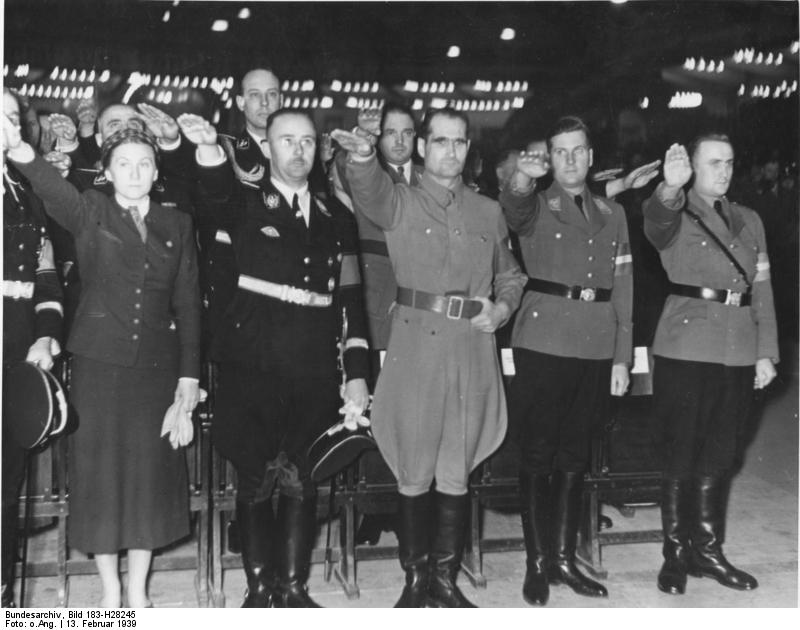 F.l.t.r.: Reichsfrauenführerin Gertrud Scholtz-Klink, Heinrich Himmler, Rudolf Hess, Baldur von Schirach and Arthur Axmann. Source: Bundesarchiv.
F.l.t.r.: Reichsfrauenführerin Gertrud Scholtz-Klink, Heinrich Himmler, Rudolf Hess, Baldur von Schirach and Arthur Axmann. Source: Bundesarchiv.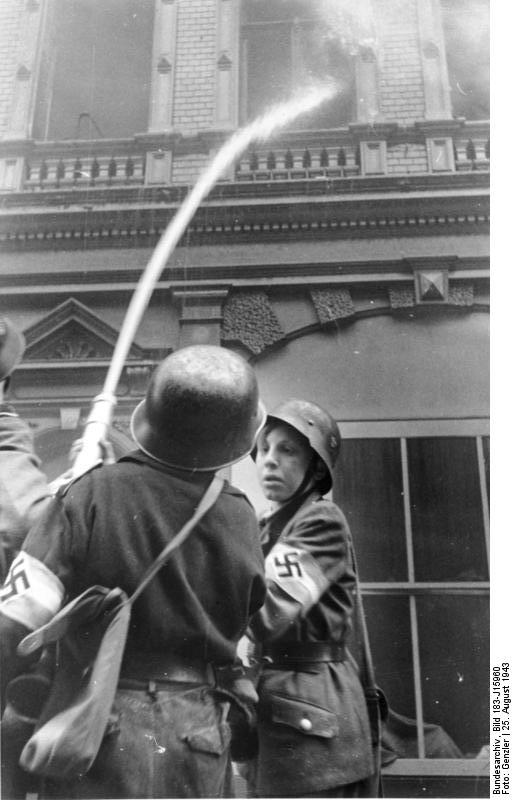 The Hitlerjugend was also deployed as firefighters to extinguish the fires caused by the Allied bombardments. Source: Bundesarchiv.
The Hitlerjugend was also deployed as firefighters to extinguish the fires caused by the Allied bombardments. Source: Bundesarchiv.12th SS-Panzerdivision
The year 1943 was a near definite turning point in the war for the Germans. Although the Soviet Union had proved a much tougher adversary since the beginning of the German invasion of Russia than had been assumed previously, the Germans now had to acknowledge serious defeats. On February 2nd the Germans had definitely lost the battle of Stalingrad. A few months later, they had to give up their conquered territories in North-Africa. In July their counterattack near Kursk failed. The Allies advanced into Italy and were preparing a much more massive invasion via the west coast of Europe in the meantime. The army was faced with a steadily declining number of soldiers. In order to fill the German ranks the Hitlerjugend was called upon. Suggestions within the N.S.D.A.P. that had already been circulating for a long time to let the Hitlerjugend participate in the war effort were now put into practice.
The result was the establishment of the 12. SS-Panzerdivision Hitlerjugend. There was fanatic recruiting going on among the boys. Although it was intended to form a division of 17 year old boys, those at the age of 16 and less were not excluded. In the summer of 1943, the recruits arrived in boot camp in Beverloo at Leopoldsburg in Belgium (Truppenübungsplatz Beverloo). In order to provide the division with experienced soldiers and officers, veterans of the Waffen-SS who had seen service on the Eastern front were transferred to the newly formed division. The veterans included men from the 1. SS-Panzerdivision Leibstandarte Adolf Hitler. Former leaders of the Hitlerjugend, who had become officers in the Wehrmacht in the meantime, were also added to the division. The N.C.O.s consisted almost exclusively of Hitlerjugend who had shown qualities of leadership during paramilitary training. The division was to be commanded by 34 year old SS-Oberführer Fritz Witt who had previously been active in the ranks of the Hitlerjugend himself.
Towards September 1st, 1943, over 16,000 boys had completed their six weeks of basic training. Most of those boys were so young, they received candy in their rations instead of cigarettes and alcohol. As SS-Oberführer Witt realized his division had to be battle ready as soon as possible, he ignored military regulations and conventions. He had combat training set up as realistic as possible and he had his men use live ammunition during practice. A relation developed between the men and the officers, based on mutual trust and respect instead of the conventional regulations and harsh military discipline. In March 1944, the division was considered ready for action and was transferred to Caen in Normandy. During the following year, the division continued training fanatically and made itself familiar with the area.
On June 6th, 1944 the Allies invaded Europe in Normandy. The Hitlerjugend division and the 21. Panzerdivision were a short distance away from the beaches where the Allies had just landed. After they had received Hitler’s permission to advance to the beaches, they faced Allied bombers for the first time. They managed to inflict much material damage with their air attacks, causing the division’s advance towards Caen to be delayed considerably. At the end of the day, the first units of the division reached their assembly point near Evrecy.
The next day, the divisions succeeded in repelling the advancing Canadian infantry. Subsequently the Canadians attempted to penetrate the exposed right flank of the division with tanks but in this they failed. The Hitlerjugend resisted fiercely and even managed to take 150 prisoners of war. On June 8th, the division was charged with retaking the surrounding villages that had been occupied by the Canadians. Although the Hitlerjugend division attacked fanatically and did inflict damage to the Canadians, they did not succeed in pushing back their opponents. According to the Canadians, the failure of the young Germans was not due to a lack of courage or devotion but rather to the fact their attacks were uncoordinated and they did not make use of advantageous methods of attack. As a result, the Germans did not manage to "drive them back into the sea" as had been ordered. The fighting petered out in scattered local skirmishes and the Hitlerjugend division was gradually forced back in the direction of Caen.
On June 16th, divisional commander Fritz Witt was killed in action during an artillery bombardment by the Royal Navy. 33 year old SS-Standartenführer Kurt Meyer immediately took command. The Hitlerjugend division stood its ground despite heavy artillery shelling by the Canadians and despite fierce engagements. After having witnessed a company that had very arduously kept up its defense, Kurt Meyer wrote he "greatly admired the courage of the young soldiers who only shortly before had received their baptism of fire." He was aware however of the unstable state his units were in. After having visited an almost decimated defensive position on the outskirts of Caen, he wrote: "These totally exhausted soldiers had fallen into a deep sleep. Men crept into the bunker and fell down wherever there was space. The soldiers of the 12. SS-Panzerdivision were dead on their feet. They had fought at the front for four weeks without relief and had sustained heavy blows. They had marched into battle with fresh, glowing cheeks. Now, the muddy helmets made shadows on withdrawn faces and eyes that had seen hell all too often."
On July 11th, after some more sporadic fighting in Caen, the Hitlerjugend division was relieved by the 1. SS-Panzerdivision. The division suffered 595 dead. The artillery regiment and a battalion of Panzergrenadiere would remain in the field to support the 1. SS-Panzerdivision. The other units were granted a short furlough. On July 19th, however they were active at the front again to fight the British and Canadians in Operation Goodwood. The month of July ended with repelling the British 2nd army in Operation Bluecoat.
On August 8th, the Canadians launched a new attack on the division. They managed to weaken the Germans considerably by knocking out most of their tanks. This resulting weakening of the German defense was exploited by the Canadians to force the Germans to pull back even further. The unit had suffered such massive losses it could in fact no longer operate as a division. Meyer was forced to order his division, which had only 10 tanks left at its disposal and no artillery, to cross the river Dives and retreat further inland. Once there, the division was reorganized. The fighting in Normandy had taken its toll: 55 officers, 229 N.C.O.s and 1,548 men had lost their lives. Including the 241 officers, 1,024 N.C.O.s and 7,244 men already lost, the number of casualties rose to 8,569 out of the original 20,540. The units still able to fight on were added to a Kampfgruppe that would become part of the 2. SS-Panzerdivision Das Reich.
The Hitlerjugend division was granted a short period of rest. The losses in men and material were hardly replenished in this period. Some time later, they were active during the retreat across the Franco-Belgian border. Commander Kurt Meyer was taken prisoner on September 6th by the Belgian resistance and as the division was unable to launch a rescue action, SS-Sturmbannführer Hubert Meyer was appointed the new commander. The division was sent to Nienburg, Germany for a period of rest. Here, on October 24th, Meyer was replaced as commander by SS-Sturmbannführer Fritz Krämer who was replaced himself by SS-Brigadeführer Hugo Kraas on November 13th. The gaps in the ranks were finally filled by men from the Luftwaffe and the Kriegsmarine but the unit would never attain the same hitting power as before. The division was added to Sepp Dietrich’s (Bio Dietrich) 6. Panzerarmee and subsequently participated in the battle of the Ardennes.
On December 16th, the division moved to the Ardennes. There, after having been held up in traffic, it managed to reach the ridge near Elsenborg, but did not succeed in defeating the Americans who were stationed there. After a few failed attempts to take the American defensive positions, the division was diverted to Bastogne on December 31st. The small town became the scene of some ferocious fighting but the Germans did not succeed in penetrating the American lines. The Hitlerjugend division stood at 2,17 miles from Bastogne, too far to reach by artillery. In order to make it possible, the division was ordered to take Hill 510. Despite protests from the divisional staff to the effect that the division did not have the strength anymore to take the hill after all the losses it had suffered, the order was not withdrawn. On January 8th, the division managed to take the hill, albeit with much difficulty. Due to the low manpower within the unit, they could not enjoy their success very long as they had to relinquish the hill to the Americans two days later. For Germany, the offensive in the Ardennes ultimately turned into a failure as they had not been able to break through the Ardennes and push the Allies back.
On January 14th, 1945, 6. Panzerarmee commanded by Sepp Dietrich was ordered to eastern Hungary in order to retake the oilfields, occupied by the Red Army and to clear the way to Budapest where 45,000 men of the IX. SS- Waffen-Gebirgs-Korps were surrounded. Although the Soviets were amazed the Germans were still able to launch an offensive, the Wehrmacht got no further than an attempt at breakout on February 11th. The small success achieved strengthened the morale among the German troops and another attack was planned on the 12,43 miles deep Soviet bridgehead near Gran, north of the Danube and four other bridgeheads. The Hitlerjugend division which had just arrived and the SS-Leibstandarte Adolf Hitler managed to defeat the Soviets on February 17th .
In the following weeks, the division held its ground despite grievous losses. Although no figures of the number of casualties are known, it is certain that early March, the division was re-inforced with 23 officers, 60 N.C.O.s and 1,040 men. Afterwards, the division was ordered to join Operation Frühlingserwachen. The intention of this offensive was to consolidate the gains of the Wehrmacht in Hungary where it had fought to hold the valuable oilfields. Although the operation had been prepared in utmost secrecy, the Soviets were now much better informed about the hitting power and the developments in the German army. The German plan was highly ambitious since the army was to wage war with limited means on a broad front. The Hitlerjugend division was to be part of the forces that were ordered to advance towards the Sio canal, some 37,28 miles northwest of Budapest, to establish bridgeheads.
The German offensive began on March 6th . In snow and temperatures near freezing point, the Germans achieved some successes but they were minimal. The Stalin organs and mortars of the Red Army inflicted heavy losses on the German ranks. On March 11th, the Hitlerjugend division did manage to establish a bridgehead on the Sio canal but this success was wiped out on March 15th by the Red Army. On March 18th , the Soviets pulverized the Germans who had to accept defeat owing to the murderous artillery barrage they were subjected to. The Hitlerjugend division had fought its last battle.
Although the division had earned a reputation meanwhile for the fanatical enthusiasm the young soldiers fought with, after the war they really gained notoriety as the war crimes they had committed were revealed during the various trials. On June 7th and 8th, 1944, 140 Canadians and 2 British had been executed by the division. SS-Oberführer Kurt Meyer, being commander of the division at the time, was held responsible for these crimes. Initially he was sentenced to death although later on, this was changed to life imprisonment. During his internment, he exchanged letters with a number of Canadian and British officers who had fought against him in Normandy. On September 7th, 1954 he was released prematurely after his pen friends had urged his release.
Images
The end of the HitlerJugend
After the battle of Normandy, the tide seemed to turn definitely against the Germans, certainly as the Soviets could hardly be stopped either. On occasion of the proclamation of total war by Reichspropagandaminister Joseph Goebbels, Reichsjugendführer Arthur Axmann said in September 1944: "As the sixth year of the war begins, the youth of Adolf Hitler is ready to fight resolutely and full of confidence for their own freedom and the freedom of the Fatherland. We say to them: you must decide whether you will become the last of an inferior race that will be despised by future generations, or that you will become part of a new era, so amazing it will be second to none."
As both the Waffen-SS and the Wehrmacht suffered from a severe shortage of men and officers, Hitler ordered boys from the age of 15 to be trained in a very short time in order to send them to the Eastern Front. On September 25th, 1944, the Volkssturm was established, commanded by Heinrich Himmler (Bio Himmler). This force consisted of boys of 16 years old and men up to 60 years. They were predominantly trained to use the Panzerfaust, an expendable anti-tank weapon. The Volkssturm numbered 60,000 men in the end. The large variety in ages caused quite a lot of embarrassment. Alfons Heck was 17 years of age when he, a seasoned member of the Hilterjugend, was put in charge of a platoon of Volkssturm. Later, he remembered: "Out of the 45 men, there were only 10 Hitlerjugend; the others were in their forties and fifties. Herr Wolf, whose son, a sergeant in the Waffen-SS, had died, was 65 years old. I looked at them a little puzzled; no discipline, too old, physically in no condition and those red-and-black armbands which read Deutsche Wehrmacht. Being their leader, I was very much aware of myself and my age. There were even fathers of school friends among them."
In March 1945, Martin Bormann (Bio Bormann) proposed to provide girls and women of the B.D.M. with weapons and send them to the front to contribute to the defense of Germany. He intended to mobilize as many Frauen Battalione as possible. Arthur Axmann vehemently opposed this idea. His main concern was he could not foresee the consequences of internment of German women as prisoners of war. He just did not want to subject German women to the Russian barbarians. Not much later, Axmann did permit women to be trained in the use of pistols for defensive purposes. Yet, he could not prevent Himmler from sending some 6,000 women to the front. They soon became known as Blitzmädel and served mainly in anti-aircraft positions but also in other branches of the Wehrmacht.
During the defense of Berlin, the Hitlerjugend was not active as an organized entity; they often hid alone or in small groups, in bombed out buildings or in ditches to inflict damage on the Soviets using their Panzerfaust. The Soviets lost many tanks due to the fanatics of the members of the Hitlerjugend who often disregarded danger. A relatively large number of members of the Hitlerjugend were decorated for their achievements, for instance for knocking out various tanks and Soviet infantry and rescuing German soldiers in hazardous situations.
A memorable event, recorded on film is Hitler’s last public appearance. On April 20th, his 56th birthday, he presented awards to a group of 12 year old boys , outside the Führerbunker for their military achievements. The emaciated Führer thanked the boys for their contribution to the struggle for their German Fatherland. Two of the boys were awarded the EK 1, (Iron Cross) the others received their EK 2.
Members of the Hitlerjugend who had been active in the final weeks of the Third Reich, were ordered to defend lines that were simply impossible to hold. Many of the Hitlerjugend committed suicide after they had received word about the surrender and Hitler’s death while others fought until the last against the Allies who were better equipped and better armed. With their sporadic and local attacks in small groups they only managed to cause more victims in a war that had already been lost.
In the final days of the Third Reich, despite the impending defeat of Germany, there were still active members of the Hitlerjugend who in fact operated as suicide squads in order to inflict as much damage to the Allies as possible. When in February 1945 Germany’s military situation had deteriorated to such an extent that they had had to give up a few important cities, a special training program for guerilla warriors was launched. They soon became known as Werewolves. The aim of the Werewolves (in which not only members of the Hitlerjugend were actively engaged but older boys and even grown ups as well) was to commit sabotage behind enemy lines and cause as much chaos as possible in the process. Heinrich Himmler for instance, ordered the new mayor of liberated Aachen, Franz Oppenhoff, to be assassinated. On March 25th, 1945, a murder squad including a 16 year old member of the Hitlerjugend and a 23 year old leader of the B.D.M. , carried out the order successfully. While fleeing from the city, one of the members was mortally injured by a landmine and later, on the rest of the trip the B.D.M. leader was injured. After the war, all but one surviving members of the murder squad were tracked down and sentenced. These murder squads operated in various places behind enemy lines. In Braunschweig, two Werewolves of the Hitlerjugend were captured by the Americans after they had attempted to ambush an American supply convoy. They were duly executed on June 1st, 1945.
The two most prominent leaders of the Hitlerjugend, Baldur von Schirach and Arthur Axmann, stood trial after the war for their crimes. Von Schirach was tried by the International Military Tribunal (I.M.T.) and Axmann by the American led Nuremberg Military Trial (N.M.T.). Von Schirach adopted an extremely innocent attitude during his trial, portraying the Hitlerjugend as an innocent organization of scouts with hardly any paramilitary training involved. He also disassociated his organization from the policy regarding Jews that the Nazis had carried out during their regime and he played down the indoctrination of the Hitlerjugend. He was sentenced to 20 years imprisonment (Verdict Von Schirach) for crimes against humanity, based on his involvement in the deportation of 60,000 Viennese Jews to Poland. He was not sentenced at all for his role as leader of the Hitlerjugend. See also Final Von Schirach.
Arthur Axmann was designated by the Americans as the prime suspect in connection with the Nazi youth policy. This meant that the court held him, having been the leader of the Hitlerjugend , mainly responsible for the crimes the Americans had charged him with. During the war, he was accountable for the participation of German youth in the war effort in particular. After the war, he had attempted multiple times to rejuvenate the Hitlerjugend. These attempts failed because each time, the Allied authorities were one step ahead of him. In 1949 he was sentenced to 39 months forced labor on the charges mentioned above. Once more in 1958, he was fined by the Berlin court for the efforts he had made to indoctrinate German youth.
Images
Conclusion
In 20 years’ time, the Hitlerjugend had evolved from a small political youth movement of the N.S.D.A.P. to a youth organization which encompassed almost the entire German youth that made them ready for the war efforts of the Third Reich. Apart from the extensive military training, the youth was thoroughly imbued with the Nazi ideology. The Nazis had brainwashed the youth in such a way they backed the Führer unconditionally. Jews and other enemies of the state could not count on any compassion from the youngster as they had simply been taught that the punishments, opponents to Nazism were subjected to, were justified. At the time, Werner Mork judged the so called enemies of the state as follows: "We were convinced that these emigrants were traitors to the people who evaded the punishment they deserved. We considered the judgments and punishments, imposed on the opponents to the new system in the same way. These opponents were considered incurable by the authorities. We accepted that these opponents were sentenced, that they were locked up in prisons and concentrations camps. Only a tiny section of the population possibly felt some compassion for them."
Almost all children who had been members of the Hitlerjugend had been brainwashed by the Nazis to such an extent that an intensive re-education process was required before they would be able to function "normally" in society again. This was part of the deNazification process of the entire German post war society. It meant that all Nazi elements had to be eliminated from German society by the Allies. This process differed greatly in the various zones of occupation, as Germany was divided among the British, French, American and Soviets. The deNazification processes by the various occupiers among former members of the Hitlerjugend had one thing in common, like the rest of German society: the direct confrontation with the crimes the Nazis had committed. At the same time, education was restructured in a way in which emphasis was placed mainly on undoing the Nazification of youth. Alfons Heck, on being asked when the nature of Nazism had gotten through to him and his loyalty to Hitler collapsed, later remembered: "That took a long time. One day in March, when Lieutenant Smith released me temporarily, I could think of nothing else but the defeat I had to acknowledge. At that moment I felt no guilt whatsoever. I only felt guilty about the war that had been lost. It was to take a few years and a painful re-education process before I would hesitantly acknowledge our mass murder of millions of innocent people. My first priority, shortly after the end of the war, was to survive. Moral issues only appeared later."
In his extensive three-part history on the rise and fall of the Third Reich, Richard Evans draws the conclusion: "If ever there has been a state that deserved to be called totalitarian, it would be Nazi Germany." The education of youth is clear evidence. Before the war, the Nazis attempted to tighten their grip on youth and to mold them after Nazi ideals: brainwashed ideologically with an all but broad intellectual development and physically molded after the norm of elite soldiers. The Hitlerjugend was an antipode to parental authority. Many incidents are known in which membership of the Hitlerjugend caused tense relationships within families. When children of for instance social democratic parents were active in the Hitlerjugend at a young age, it appeared that the views of child and parents became diametrically opposed in many cases.
Veterans who had served in World War One and had developed a strong dislike for war, despised the romantic image of war that was shown to the Hitlerjugend. It has been proved more than once that the tense relations between child and parents escalated to total alienation and disruption of family ties within families.
Although the efforts of the Reichsjugendführung could not prevent resistance and revolt from breaking out among the youth, the fact remains that the Nazis had been able to mold the majority of the youth after their own ideals and with total devotion to the cause. That this cause would eventually end in a war that, according to cautious estimates, claimed thousands of young lives and many more to bear the scars of war for the rest of their lives is something the youth had no way of knowing. After all, they had been taught that dying for the Fatherland was something noble and there was nothing better than sacrificing their lives for the Führer.
Images
Membership, ranks and units
| Year | Membership |
| 1923 | 1.200 |
| 1924 | 2.400 |
| 1925 | 5.000 |
| 1926 | 6.000 |
| 1927 | 8.000 |
| 1928 | 10.000 |
| 1929 | 13.000 |
| 1930 | 26.000 |
| 1931 | 63.700 |
| 1932 | 107.956 |
| 1933 | 2.292.041 |
| 1934 | 3.577.565 |
| 1935 | 3.943.303 |
| 1936 | 5.437.601 |
| 1937 | 5.879.955 |
| 1938 | 7.031.226 |
| 1939 | 7.728.259 |
The numbers mentioned above include membership of the Hitlerjugend in Germany only. The article shows that early of 1938 the Hitlerjugend numbered 8,7 million active members. This includes members from Austria and the Sudetenland.
Ranks| Hitlerjugend | Wehrmacht | equivalent |
| Reichsjugendführer | Generalfeldmarschall | Fieldmarshall |
| Stabsführer | General der Armee | General |
| Gebietsführer | Generaloberst | Colonel-general |
| Obergebietsführer | General | |
| Bannführer | Generalleutnant | Major-general |
| Unterbannführer | Generalmajor | Brigadeer-general |
| Stammführer | Oberst | Colonel |
| Hauptgefolgschaftsführer | Oberstleutnant | Lieutenant-colonel |
| Obergefolgschaftsführer | Major | Major |
| Gefolgschaftsführer | Hauptmann | Captain |
| Hauptscharführer | Oberleutnant | First lieutenant |
| Oberscharführer | Leutnant | Second lieutenant |
| Scharführer | Oberfeldwebel | Sergeant-major |
| Unterscharführer | Feldwebel | |
| Oberkameradschaftsführer | Unterfeldwebel | Sergeant |
| Kameradschaftsführer | Unteroffizier | |
| Oberrottenführer | Obergefreiter | Corporaal |
| Rottenführer | Gefreiter | Privat first class |
| Hitlerjunge | Schütze | Private third class |
The lowest unit in the Hitlerjugend was the Kameradschaft. This usually comprised 15 boys who often were closely connected in daily life and all of them attending the same school. Three to five Kameradschafte made up a Schar, equivalent to a platoon. Three to five Schare made up a Gefolgschaft, equivalent to a company. The world of experience of the members was usually restricted to what happened within the particular Gefolgschaft as most activities were organized by the individual Gefolgschaft. Within the Hitlerjugend, the Unterbann usually was of administrative nature; in other words, the Unterbann was hardly deployed as a unit; the Reichsjugendführung often opted for a Bann whenever a group of youngsters was to be deployed for whatever activity. A Bann was the equivalent of an army regiment and consisted of some 3,000 members. Each Bann usually had six administrative branches to guide the leadership. An Oberbann was the umbrella administrative organization of various Banne. The Hitlerjugend-Standort was responsible for the local leadership of the youth. The Standorte were administrative branches that handled personnel management within their own region.
Each Gau (political district) in Germany comprised a Hitlerjugend Gebiet (administrative district). There were 43 Gebiete, its leadership was responsible for leading some 75,000 members of the Hitlerjugend. Within each Gebiet there were six different branches or Hauptabteilung, each of them with their own responsibilities: personnel, sports and preliminary military training, cultural activities and ideological education, social services, housing and judicial issues. Each Gebiet was responsible for schooling and training camps of the youth within the region. Two or more Hitlerjugend-Gebietsführerschule (school for regional leaders) were established within a Gebiet. These schools prepared potential Hitlerjugend leaders for administrative positions within the Gebiet. The so called Obergebiete were the umbrella and simultaneously the highest level of leadership of the Hitlerjugend. The Obergebiete were predominantly of administrative nature and consisted of four to six Gebiete. Five Obergebiete existed before the start of the war but by annexation and occupation of other countries during the war and owing to the technical problems in administration caused by the large size of the Obergebiete, this number increased to 48 until 1943.
Images
Information
- Article by:
- Bob Erinkveld
- Translated by:
- Arnold Palthe
- Feedback?
- Send it!
Related sights
Related books
Sources
- EVANS, R. J., The Third Reich in Power, Penguin Group, London, 2006.
- GILBERT, M., Kristallnacht: prelude to destruction, Harper Perennial, Londen, 2007.
- HECK, A., A child of Hitler, Renaissance House Publishers, Phoenix, Arizona, 2001.
- KATER, M., Hitler Youth, Harvard University Press, Cambridge, Massachusetts, 2006.
- LEWIS, B., De geschiedenis van de Hitlerjugend, Zuidnederlandse Uitgeverij, Aartselaar (België), 2003.
- STARGADT, N., Witnesses of War, Pimlico, Londen, 2006.
- Axis History
- History Place
- Axis History
- Military History Online (1)
- Military History Online (2)
- Go2War2.nl: Baldur von Schirach
- Go2War2.nl: Arthur Axmann
- Wikipedia: Hitler Youth
- Wikipedia: Reichsberufswettkampf
- Wikipedia: Luftwaffenhelfer
- The Edelweiss Pirates
- Wikipedia: Edelweiss Pirates
- Wikipedia: 12th SS Panzer Division Hitlerjugend
- Nazi Youth Ceremonies
- Lebendiges Museum Online (Deutsches Historisches Museum)
- Hitler Youth Training Material
